








WHILE TRAINING IS CERTAINLY NOT ALWAYS THE ANSWER, L&D HOLDS IMMENSE VALUE TO EMPLOYEES AND THE BUSINESS AT LARGE.
The pathway to landing a role in learning and development (L&D) is anything but linear. Learning leaders come to L&D from various backgrounds and experiences, and oftentimes, find themselves in uncharted territory with a limited network of support. Just like with any new role, becoming a training professional comes with a learning curve.
As we’ve seen over the past few years, L&D is growing in prominence as a key business driver, and the responsibilities of L&D are constantly evolving — moving far beyond delivering training programs upon request. Learning professionals now play a role in change management initiatives, internal career mobility and future organizational planning — just to name a few. The list of priorities on an L&D leader’s plate is ever-growing and expanding, which can be both frustrating and validating.
While training is certainly not always the answer, L&D holds immense value to employees and the business at large. Managing the business of learning requires a balance of the right skills and knowledge to effectively align training with the needs and goals of the business.
This issue of Training Industry Magazine focuses on the role of the learning leader and examines some of the core responsibilities of managing training and development in today’s workplace, including how to select the right learning technologies, measuring
the impact of training, establishing a training budget, creating an inclusive learning environment and embracing the potential of artificial intelligence.
This edition also features a special report, “Training Industry’s L&D Career and Salary Study,” that analyzes the career needs and salary benchmarks of training professionals across various organizations and industries. Whether you’re on an L&D team of one or a part of a larger training team, this study shares the results from more than 370 learning professionals and highlights key factors to consider as you navigate your career. From the most common job titles and work arrangements to the skills and attributes of high salary learning professionals, these insights can arm you with the information you need to determine your next steps in your career journey.
Training Industry is committed to helping you grow as a learning leader and create lasting change within your organizations. As always, we love to hear from our readers, so please reach out to our team and let us know the content that you need to drive your career forward!
Michelle Eggleston Schwartz, CPTM, is the editor in chief of Training Industry, Inc., and co-host of “The Business of Learning,” the Training Industry podcast. Email Michelle.


REFRAMING THE L&D MINDSET: EMBRACING THE POTENTIAL OF AI
22 26 30 34 38 42
By Neha Trivedi, MA, CPTMUnderstand your learners’ AI fears, as well as how to overcome them.
CUT THROUGH THE LEARNING TECH CLUTTER: HOW TO FIND SOLUTIONS THAT ADD VALUE
By Elizabeth GreeneLearn how to navigate the crowded landscape of L&D tech solutions.
THE NONLINEAR TRAINING CAREER
By
Jennifer SutherlandConsiderations to ensure your success as you navigate a nontraditional career path.
TRAINING DID THAT: HOW TO ATTRIBUTE BUSINESS RESULTS
DIRECTLY TO TRAINING
By Paul Leone,Ph.D.
Tips and best practices to isolate and measure the effect of your training.
MASTERING L&D SOLO: STRATEGIES FOR A ONE-PERSON LEARNING TEAM
By Robert Johnson, CPTM, PMP
Thrive as a team of one — and grow your own extended L&D team.
HOW TO ESTABLISH A TRAINING BUDGET
By Janessa Jacobs, CPTM
Approach your training budget and initiatives strategically, with stakeholder support.
TRAINING INDUSTRY’S L&D CAREER AND SALARY STUDY
By Alyssa Kaszycki and Amy DuVernet, Ph.D., CPTM
Results from more than 370 learning professionals to help you navigate your career.
FROM THE EDITOR
By Michelle Eggleston Schwartz, CPTM
By Dr. Nabeel Ahmad 3 9 11 13 15 59 61 63
LEARNING LEADER SPOTLIGHT
By Laura Nagy, CPTM
L&D CAREERS
By Amy DuVernet, Ph.D., CPTM
SCIENCE OF LEARNING
By Srini Pillay, M.D.
CAREER DEVELOPMENT
By Julie Winkle Giulioni
DIVERSITY AND INCLUSION
By Dr. Kristal Walker, CPTM
BUILDING LEADERS
By Sam Shriver and Marshall Goldsmith
WHAT’S NEXT IN TECH?
UPSKILLING
By Dr. Gihan AbuelelaStrategies to understand unconscious bias and foster truly inclusive learning spaces.
HOW-TO
By Marilyn GoodwinLearn how to become a trusted advisor and position L&D as a valuable asset.
STRATEGIES
By Rebecca Wyatt and Emily CrockettCustomize your learning content based on the preferences of your learners.
PERSPECTIVES
By Alaina Doyle, Ph.D.Map the successful delivery of enterprise-wide training solutions across your organization.


CASEBOOK
By Mike Allen, CPTMLearn how L&D is leading learning transformation for a global renewable energy company.
CLOSING DEALS
By
Sarah Gallo, CPTMMadCap Software’s acquisition of Xyleme is set to streamline technical documentation and course development.
COMPANY NEWS
Review the latest training news from the last quarter.
CEO
Ken Taylor ktaylor@trainingindustry.com
EDITOR IN CHIEF
Michelle Eggleston Schwartz meggleston@trainingindustry.com
SENIOR EDITOR
Sarah Gallo sgallo@trainingindustry.com
EDITOR
Mike Allen mallen@trainingindustry.com
CREATIVE DIRECTOR
Amanda Longo alongo@trainingindustry.com
SENIOR DESIGNER
Mary Lewis mlewis@trainingindustry.com
DESIGNER
Kellie Blackburn kblackburn@trainingindustry.com
DESIGNER
Cassandra Ortiz cortiz@trainingindustry.com
JUDI BADER, CPTM Senior Director of Culture, Learning and Development
Willy’s Mexicana Grill
MICHAEL CANNON, M.ED. Vice President, Global Learning and Enablement
Rimini Street
BARBARA JORDAN, CPTM Group Vice President, Global Learning & Development Sims Metal Management
CATHERINE KELLY, MA, BSN, RN, CPTM Director of Learning Programs
Brookdale Senior Living
SHIREEN LACKEY, CPTM Senior Management and Program Analyst, Office of Business Process Integration Veterans Benefits Administration
SCOTT NUTTER Principal/Owner Touch & Go Solutions
DESIGNER
Rylee Hartsell rhartsell@trainingindustry.com
DESIGNER
Sha’Meire Jackson sjackson@trainingindustry.com
ADVERTISING SALES sales@trainingindustry.com
MATTHEW S. PRAGER, CPTM Executive Training Manager U.S. Government
MARC RAMOS Chief Learning Officer Cornerstone OnDemand
KELLY RIDER Chief Learning Officer PTC
DR. SYDNEY SAVION Global Learning Futurist Google
KERRY TROESTER, CPTM Director, North America Sales Training Lenovo
NATASHA MILLER WILLIAMS Head of Diversity & Inclusion Ferrara
KEE MENG YEO
Adjunct Professor Grand Valley State University & Davenport University
Training Industry Magazine connects learning and development professionals with the resources and solutions needed to more effectively manage the business of learning.
ELECTRONIC: Sign up at TrainingIndustry.com to receive notification of each new digital issue.
PRINT: Print copies are available for purchase at magcloud.com for $17.95.

I really need context— can you clarify?
Seems like what really matters is trust, caring, and commitment.
But—we do cool stuff like advanced AI coaching.
But SweetRush is also doing that.
We are getting a Prompt!
Let’s show SweetRush what we can do!
Hasta la vista, baby!
Um… I think you’re hallucinating.
Oh, right—hard to stop the random stuff.
We don’t get it—and we don’t do that!
And they’re placing high-performing talent with clients.
Like…real people? Eeek…we don't do that either.
“Help me find a caring, trustworthy, creative L&D agency that can help my people change and can provide me with talent when I need to augment my team.”
Listen—we have problems.
Prompt problems?
No. It’s fuzzy, but it’s about stuff we can’t do.
Where’s this stuff coming from?
It gets worse—they’re L&D experts who are really into the craft.
Craft?
Like making friendship bracelets??
Searching, searching through a universe of data!
Oh no… it's SweetRush!
You really do deserve that (human) caring, trustworthy and creative L&D agency. You really do!
• eLearning your people will love you for? Imagine it!
• Under pressure - need talent? We’ve got you covered!
• VR, WebXR, AI? Talk to us - then sleep well!
• LMS blues? It’s ok, we can help!
• SRVO.com? Surprise!
We’d be thrilled to partner with you—so please reach out!
info@sweetrush.com www.sweetrush.com

In this issue, we are excited to spotlight Laura Nagy, CPTM. Laura has been working in the learning and development (L&D) space for 15 years and has gained experience in a wide range of roles like instruction/ facilitation, instructional design, training administration, instructor development and leadership. Today, Laura serves as the information technology (IT) training manager for Michigan State University. Laura is a certified professional in training management (CPTM) and also performed certifications of instructors to teach for NASA at the Kennedy Space Center. Read on to learn more about Laura’s career journey.
Q: HOW DID YOU GET STARTED IN L&D?
A: The first portion of my career was in the federal government with their behavioral analysis unit. After gaining valuable experience, I moved into L&D, where I onboarded new hires and taught behavioral analysis — and eventually three tiers of leadership training. I have since moved to the civilian arena.
Q: WHAT’S YOUR MOST MEMORABLE TRAINING EXPERIENCE, GOOD OR BAD?
A: While at the federal government, I trained an officer in behavioral analysis. She lost her confidence, and I provided guidance to help her regain her self-belief. After she graduated, she asked me to put her two-stripe epaulet on her uniform as a sign of gratitude for my support.
Q: WHO WOULD YOU CONSIDER YOUR MOST VALUABLE ROLE MODEL? WHAT WERE SOME QUALITIES THAT MADE THEM GREAT?
A: I consider myself lucky to have come across an outstanding role model and
mentor in my professional journey. His name is Scott, and even though I am no longer working in the government, he still provides mentorship. He’s always available, listens attentively, gives valuable advice and is an exceptional leader.
Q: WHAT ARE THE MOST PRESSING ISSUES ON YOUR PROFESSIONAL PLATE RIGHT NOW?
A: Currently, I’m focused on creating strategic alignment with the goals of my team and those of the university. Additionally, I’m exploring various metrics to identify areas where we can improve efficiency and effectiveness, with the ultimate aim of providing the highest quality services to our campus community.
Q: WHAT’S THE MOST CHALLENGING ASPECT OF YOUR JOB?
A: One of the most challenging aspects of my job is to provide data that includes both quantifiable and qualifiable metrics on the value we offer. Although it’s technically feasible, the subjectivity of the value we provide makes it difficult to quantify.
Q: WHAT’S THE MOST REWARDING ASPECT OF YOUR JOB?
A: As an L&D professional, it brings me immense joy when I’m able to positively influence a team member and witness their growth. Seeing their progress reinforces my sense of purpose and motivates me to continue striving for excellence in my field.
Q: WHAT’S YOUR PREFERRED TRAINING METHODOLOGY?
A: While virtual and blended learning have their advantages, I believe that instructor-led training is the most effective approach. Nevertheless, incorporating interactive elements such as games, energizers and activities is essential in creating engaging, enjoyable and
highly effective learning experiences, regardless of the delivery mode.
Q: HOW DO YOU FIND THE TIME FOR YOUR OWN PROFESSIONAL DEVELOPMENT?
A: Investing in yourself is the first step toward achieving success and reaching your full potential. You must be purposeful in designating time — it’s essential. Neglecting to invest in yourself can have negative consequences for you and your team, leading to a fixed mindset and a lack of motivation for excellence.
Q: ANY RECOMMENDATIONS FOR FOLKS OUT THERE: BOOKS, PARTNERS, RESOURCES, ETC.?
A: As a leader, I’m constantly seeking out new ideas and perspectives to help me grow and improve. Over time, I’ve come across several excellent books on leadership:
• “Start With Why: How Great Leaders Inspire Everyone to Take Action” by Simon Sinek.
• “She Thinks Like a Boss: Leadership: 9 Essential Skills for New Female Leaders in Business and the Workplace” by Jemma Roedel.
• “How to Work Fewer Hours, Make More Money, and Spend Time Doing What You Want” by Joe Sanok.
Q: IF SOMEONE WANTS TO FOLLOW IN MY PROFESSIONAL FOOTSTEPS, I’D TELL THEM TO BE SURE TO:
A: Get your seat at the table, observe and have a voice. Network to build connections and expand your knowledge. Finally, seek mentorship to learn from experienced professionals and gain valuable insights. Be sure to actively listen to the advice given and use it to enhance your personal and professional development.
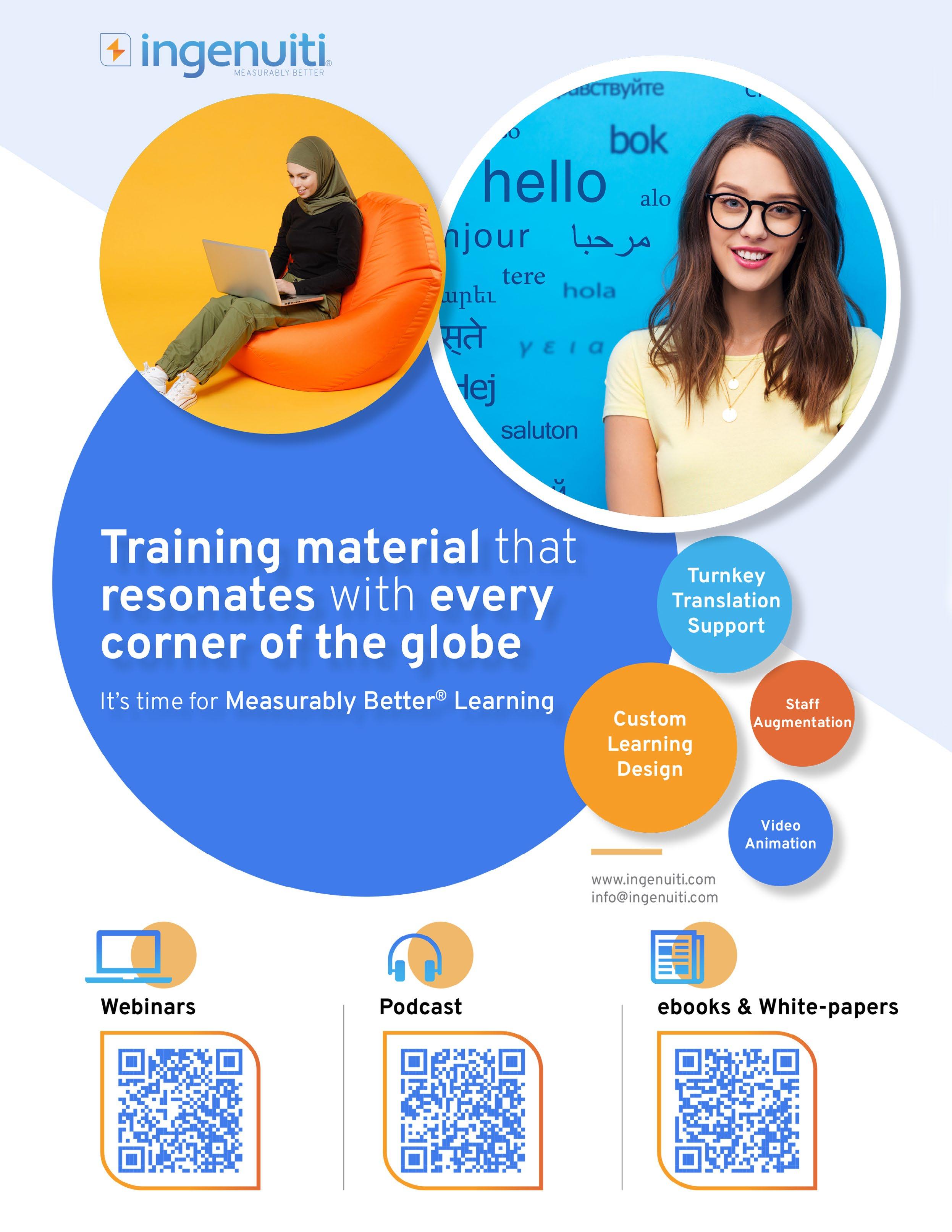

In my previous column, I explored the diverse backgrounds that lead professionals into learning and development (L&D). Because the streams that lead to L&D are varied, selecting the right L&D professional is often challenging. In this column, I’ll focus on L&D careers from the other perspective — that of a hiring manager — describing the process of defining an L&D job role, recruiting candidates and ultimately hiring an individual into a training role, offering tips at each phase to help you with the process.
First, clearly define the role and its responsibilities. There are some great resources out there — Training Industry has several relevant wikis (e.g., the training process framework), the Department of Labor’s job classifications, as well as published job descriptions for similar job roles via job boards and HR resources Lean on these for inspiration, but also consider your own context. Ask yourself:
• How will this position fit within our talent development team?
• Who will they work with? What teams and stakeholders might be impacted?
• What percentage of their time will be spent on each responsibility and how critical is each to their overall job performance?
BECAUSE THE STREAMS THAT LEAD TO L&D ARE VARIED, SELECTING THE RIGHT L&D PROFESSIONAL IS OFTEN CHALLENGING.
Next, you should identify the required knowledge, skills, abilities and other characteristics (KSAOs) for the role. Look to L&D competency models, such as Training Industry’s Training Manager Competency Model. Assess which are necessary immediately versus those that can be learned on the job. Equally important to consider are those that are not required.
For instance, while many job postings mandate a college degree, this may end up excluding valuable candidates. Similarly, you may be tempted to list an L&D background as a prerequisite but widening your scope could bring transferable skills and new perspectives.
Thoughtfully crafting your job posting is your next step, as the language you use in the post can significantly influence your recruitment efforts. Research shows that certain phrases might deter applicants (e.g., “fast-paced work environment” could signal a highstress job role to a candidate). Use tools to check your job postings for biased language and assert your organization’s commitment to diversity and inclusion.
In addition, your job posting should highlight your organization’s culture, values, mission and commitment to professional development. Candidates, especially those in L&D, seek roles where they have opportunities for growth.
Just as critical as a thoughtful job posting is a carefully designed hiring process. Some key best practices to consider include:
• Reducing unconscious biases — remove names and pictures from resumes, portfolios and other materials.
• Involving key stakeholders in interviews. Stakeholders will offer different perspectives, giving candidates a more comprehensive view of their potential working environment.
• Standardize interview questions based on identified KSAOs. Focus on jobrelevant questions and avoid personal information, such as marital or parental status, as it tends to be unrelated to job performance and could signal protected class information that must not be considered in your hiring decisions.
• Offer your interviewers training on how to ask questions with follow-up prompts. Be sure to emphasize the importance of representing the company, as job candidates are also evaluating fit.
• Creating a standardized rating form to record perspectives on the candidate’s suitability. Ask about the candidate’s potential to fit within and enrich your company culture.
Hiring the right candidate is pivotal for your organization’s success in achieving business goals. By defining required skills and expertise, embracing diversity and focusing on cultural fit and potential for growth, you can assemble an L&D team that not only delivers results but also promotes a culture of continuous learning.
Amy DuVernet, Ph.D., CPTM, is the director of training and development at Training Industry, Inc., where she oversees all processes related to Training Industry’s courses for training professionals, including program development and evaluation. Email Amy.


To be engaged in learning, learners must be “on.” But there are several threats to being “on” that learning and development (L&D) leaders would be wise to consider as they implement upskilling or change management programs. After all, by being aware of threats impacting the brain’s engagement, L&D leaders are more likely to be successful at implementing programs. Let’s take a look at some of the common barriers to being “on,” and explore how L&D can move past them.
Cynicism — a belief that self-interest is the ultimate motive guiding human behavior — is on the rise. It is greater when supervision feels abusive, and it is a key feature of burnout, in part because it increases when people feel stressed.
A recent study of about 200,000 individuals from 30 countries found that cynical (vs. less cynical) individuals generally do worse on cognitive ability and academic competency tasks.
Actions : L&D leaders should ensure that learning does not occur in an abusive environment, and they should prioritize burnout reduction prior to implementing learning programs. Burnout reduction is likely to be more successful if this becomes an organizational cultural imperative and a more widespread initiative.
When there is constant change, fatigue may ensue. This fatigue can impact work performance and learning. Fatigue also has an emotional dimension, because people who are
anxious may be more fatigued due to the additional strain of the anxiety.
In the brain, the circuits that are affected include those involved in a sense of excitement and motivation. Both are compromised. As a result, learning may be impacted too.
Actions : It’s one thing to adapt quickly. It’s another to strain the brain’s capacity such that people feel deeply anxious. For example, in late 2022, ChatGPT broke records as the AI platform reached 1 million users in less than a week. Along with this, tasks may be completed at a much faster rate — but this may exceed the brain’s capacity to cope with an accelerated workflow.
L&D leaders should roll out change initiatives at a rate that is competitive yet well-planned and reasonable. Foster a collaborative environment and encourage a growth mindset, as recovery from errors will be faster and easier, thereby reducing change fatigue. Space out learning so that people have a chance to internalize it.
When employees are risk-averse, it can slow learning down. People often become overly reliant on external guides, skipping the special features of embodied learning that come from agency and daring to make intimate contact with the learning experience. In the brain, learning how to modulate anxiety can change brain circuits such that aversion to risk or loss is less.
Actions : For new learning to be successful, learners often must make the process their own. This involves experimenting with the learning
process, and problem-solving through discovery. One way of reducing risk sensitivity is by using the “do one then see one” method, where, rather than first observing how to do something, people can be given minimal instructions and then asked to discover how to do something.
FOR NEW LEARNING TO BE SUCCESSFUL, LEARNERS MUST MAKE THE PROCESS THEIR OWN.
For example, if using a new video editing technology, rather than reading through the instructions first, learners can simply experiment on their own prior to formal learning.
By keeping these basic principles of learning in mind, L&D leaders can increase their chances of successful learning programs. To remember these five principles, consider the mnemonic BRAVE, which stands for B urnout reduction, R easonable Change Pace, A gency in Learning, V itality program, and E ncourage a growth mindset. This can provide a framework for a deeper dive into brain-based contextual factors that can enhance learning.
Dr. Srini Pillay is the CEO of NeuroBusiness Group. He is a Harvard-trained psychiatrist and neuroscientist, on the Consortium for Learning Innovation at McKinsey & Company, and author of “Tinker Dabble Doodle Try.” Srini is also co-founder, chief medical officer and chief learning officer of Reulay Email Srini.


Not all learning leaders have the same development needs.
That’s why Training Industry Courses created personalized Learning Journeys.
From topics including evaluating performance, identifying training needs and managing learning technologies, there is a Learning Journey that will help you fill your unique skills gaps to become a more confident learning leader.

In a world where we’re bombarded daily with research studies, opinions and news about employee dissatisfaction, it’s easy to internalize a bleak picture of workforce sentiment: stress, burnout, mental health challenges, absenteeism, disengagement, attrition. And while very real for many employees (and employers), it’s not the complete picture.
TODAY’S WORKFORCE IS LOOKING FOR A NEW AND DIFFERENT RELATIONSHIP WITH WORK.
Earlier this year, Randstad released its annual workmonitor 2024 report, including a happier and more hopeful statistic than we’ve come to expect: 39% of workers don’t want to be promoted because they like their current jobs.
A significant yet frequently silent number of employees actually like what they’re currently doing. In fact, they like it so much that they’re not interested in pursuing the traditional definition of career success: That upward trajectory, always moving toward the next level.
Given the pressures of the past few years, the break-neck pace of change, challenges with retention and more, it’s understandable that organizations and leaders have been forced to focus on gaps, problems and what’s not working. But this research shines a bright light on a new and necessary area of focus — addressing, mining and amplifying what is working for many.
People are looking for something more — or perhaps something less. Today’s workforce is looking for a new and different relationship with work. The old employment contract — where the organization gave us a job and we gave everything we had in exchange — has given way to a more balanced and personalized quid pro quo. Employee contentment is at the core of the new equation. My own research has shown that interest in contentment has steadily grown since the beginning of the pandemic. For many employees, contentment eclipses the desire to climb up the corporate ladder.
These shifting aspirations challenge organizations and leaders to adjust mindsets and practices — and figure out how to facilitate an employee experience that’s tailored to the unique needs and wants of the individual. Rather than focusing on new roles, leaders may be better served to promote the experience of achievement, autonomy, enjoyment and growth required to fuel engagement and future-proof careers. In lieu of a new title, employees may be looking for more meaning, purpose, positive relationships at work or the balance to also enjoy positive relationships outside of work. Promoting the ability to use one’s creativity, strengths and talents represents a more attractive value proposition to a large portion of the population than arriving at the next rung of the corporate ladder.
Because of the limited number of promotions and the way organizations dispense them, leaders frequently felt
they lacked what was necessary for career growth and satisfaction.
But this is no longer the case. Leaders have everything they need to promote contentment. The ability to deliver a deeply satisfying and engaging employee experience is completely within an individual leader’s sphere of influence … but only if they’re ready to:
• Release old models and assumptions about what employees are looking for. One size no longer fits all. Acknowledging this and approaching each employee with fresh eyes and an open mind allows leaders to meet people where they are.
• Engage in a new, different conversation. Embracing the possibilities associated with elevating contentment demands a deeper understanding of the employee than ever before. Moving beyond the surface-level discussions of where someone sees themselves in five years requires trust, rapport and an ongoing thread of meaningful dialogue.
Just like so much else in business, the idea of career advancement is in transition. Promotions may no longer be the universal hallmark of success. The “peak” for many employees is migrating from the top of the pyramid to a more personal sense of contentment with one’s work. And that’s something everyone can be happy about.
Julie Winkle Giulioni is the author of the bestselling books, “Promotions Are SO Yesterday” and “Help Them Grow or Watch Them Go.” Email Julie.
Does your training content need to be understood by people with differing languages and cultures?
At RWS, our mission is to ensure your content resonates with everyone, everywhere.
Our world-class tech-enabled translation and localization expertise delivers content that is tailored for all your learners, their preferred languages, and unique cultural environments.
Ensure your content delivers improved understanding and learning experiences.

rws.com/elearning
In the ever-evolving landscape of corporate learning and development (L&D) initiatives, fostering inclusive environments stands as a paramount objective. L&D leaders find themselves at the forefront of this transformative journey, tasked with dismantling ingrained unconscious biases within these settings. Unconscious bias remains a pervasive challenge with far-reaching consequences, and recognizing its impact on decision-making and the effectiveness of diversity, equity and inclusion (DEI) initiatives is crucial.
This article explores the intricacies of unconscious bias in corporate L&D initiatives, shedding light on its manifestations and providing strategies for L&D leaders to foster truly inclusive spaces.
Before delving into the nuanced world of unconscious bias, it’s crucial to acknowledge the pervasive influence of these deeply ingrained biases, rooted in societal and cultural narratives. Unconscious bias can surface in corporate L&D environments, influencing perceptions and interactions.
Recognizing and addressing unconscious bias is foundational to dismantling barriers that may impede the learning journey. Unconscious bias within corporate L&D initiatives can manifest in various ways, impacting subjects like gender, cultural backgrounds, socioeconomic status, preferred learning styles and even unconscious bias by the leaders
themselves. Identifying and dismantling these biases is essential to creating an environment where all learners feel valued and included.
One example of how unconscious bias can arise in an L&D context might be when a training manager, influenced by genderbased bias, provides more resources and opportunities to men, assuming they are more suited for leadership roles, while overlooking equally (or more) qualified women.
IDENTIFYING AND DISMANTLING THESE BIASES IS ESSENTIAL TO CREATING AN ENVIRONMENT WHERE ALL LEARNERS FEEL VALUED AND INCLUDED.
Unconscious bias is deeply ingrained in the human brain, reflecting the brain’s natural tendency to categorize information for more efficient processing. The amygdala, a key player in emotional responses, and
the prefrontal cortex, responsible for decision-making, play crucial roles in shaping unconscious biases. As individuals encounter new information, the brain often relies on pre-existing stereotypes and patterns to make rapid judgments, leading to the unintentional formation of biases.
The brain’s reliance on neural shortcuts contributes to unconscious bias. These mental shortcuts enable quick decision-making but may lead to oversimplified and biased assessments of others.
• Emotional influences: Our emotions impact how we perceive and respond to the world around us; how we interpret and, subsequently, judge the actions of others. The amygdala’s involvement in emotional processing contributes to bias formation. Positive or negative emotional associations can influence decision-making, often without conscious awareness.
• Confirmation bias: The brain has a natural inclination to seek information that confirms preexisting beliefs. This confirmation bias reinforces and perpetuates unconscious biases over time. For example, if you unconsciously believe that men make better leaders than women, you are likely to ignore evidence that contradicts that belief — while noticing and internalizing evidence that agrees with it.
Several global organizations have made strides in mitigating unconscious bias within their L&D initiatives. For instance, Google introduced “Unbiasing Workshops” to educate employees and leaders about unconscious bias and encourage inclusive behaviors. By emphasizing awareness and actionable strategies, Google has transformed its learning culture and reduced bias in performance evaluations.
Similarly, Microsoft’s Inclusive Design Toolkit serves as an exemplary resource for L&D leaders aiming to break unconscious biases in corporate learning and development content. By focusing on user diversity, Microsoft ensures that its products and services challenge preconceived notions, setting a high standard for inclusivity.
Unconscious bias isn’t just a buzzword; it’s a psychological phenomenon rooted in human nature. Recent studies, such as this 2019 McKinsey & Company report, have shown that companies fostering diversity outperform their peers by 36% in terms of financial returns. This fact underscores the urgency of addressing unconscious bias in corporate training.
L&D leaders hold a unique position to influence organizational culture and learning experiences. However, they face challenges in addressing unconscious bias effectively. Overcoming these challenges requires a proactive approach from leaders to create bias-free learning environments.
To combat unconscious bias, L&D leaders must adopt evidencebased strategies:
• Raising awareness and self-reflection is essential; individuals who are aware of their biases are more likely to challenge and counteract them.
• Incorporating inclusive design principles into learning programs can help ensure that content and delivery methods are sensitive to diverse learner needs.
• Implementing effective evaluation and measurement strategies enables leaders to assess the impact of learning initiatives on bias reduction.
• Ongoing feedback can also help reinforce bias mitigation efforts.
Next, let’s explore some actionable steps that L&D leaders can take to apply these strategies and create more inclusive learning environments.
Step 1: Raising awareness Through Self-Reflection
• Practical How-To: L&D leaders can initiate open discussions about biases, their origins and their impact on decision-making. An L&D team might seek out specific trainings so that there are guidelines to follow when exploring and addressing their biases.
• Inspiring Perspective: Encouraging employees to reflect on their own biases can lead to greater selfawareness and conscious efforts to counteract them.
Step 2: Inclusive Design Principles in Learning Programs
• Practical How-To: Incorporate diverse perspectives in curriculum development and use inclusive language and imagery.
• Inspiring Perspective: When learners see themselves and their experiences reflected in training materials, engagement and retention increase.
Step 3: Bias-Interrupting Techniques
• Practical How-To: Integrate perspectivetaking exercises, case studies highlighting
bias and open discussions into training programs.
• Inspiring Perspective: Encourage participants to challenge their own biases and promote critical thinking and empathy.
Step 4: Fostering Inclusive Learning Environments
• Practical How-To: Establish ground rules for inclusive discussions, networking and mentorship opportunities for diverse learners.
• Inspiring Perspective: Inclusive learning environments not only promote diversity but also enhance organizational performance
Step 5: Share Success Stories
• Practical How-To: Highlighting these narratives in corporate learning materials, training sessions or guest speaker events can inspire employees to challenge biases and pursue their professional development with confidence.
• Inspiring Perspective: These stories of triumph illuminate the extraordinary strength and resilience of individuals who defied societal expectations to achieve remarkable success in various fields.
The topic of breaking unconscious biases in corporate learning and development has a profound impact on the corporate
learning market. As organizations strive for improved DEI, the need to address unconscious biases becomes imperative. A more inclusive learning environment not only enhances employee satisfaction but also directly influences organizational success.
Companies that actively engage in dismantling unconscious biases are likely to attract and retain top talent, foster innovation and create a corporate culture that values the unique contributions of each individual. Addressing unconscious biases is not just a trend; it’s a strategic imperative that shapes the future of corporate L&D, making it more responsive, dynamic and aligned with the diverse needs of the workforce.
Dr. Gihan Abuelela is the client engagement manager and leadership solution architect at the Center for Creative Leadership. Email the author.
L&D leaders should start by considering their own unconscious biases. After all, any biases will affect how inclusive (or exclusive) your training design can be. There are free online resources that can help you better understand your biases so that you can ensure your training is as equitable as possible.
• Set a time for “curiosity conversations,” safe spaces where employees and leaders get to know each other better by asking open-ended questions about one another’s backgrounds and viewpoints.
• Self-reflect by first thinking about your own biases that you may be aware of already, and then continuing by extrapolating what other, similar biases you may hold.
• Ask for feedback from those around you, encouraging a space of psychological safety where learners and colleagues feel comfortable telling you about where your strengths and weaknesses may lie.
A few years ago, ByteDance, the parent company of TikTok, convened a brief five-minute virtual meeting with its over 70-person talent development team, and in that short meeting, they eliminated the entire department. Why? Leadership wasn’t informed about what the talent development team actually did. While some initiatives may have been helpful individually, they weren’t bringing the business forward or demonstrating value. Many roles and functions weren’t in tune with the strategic development plans, and, ironically, many learning events were mediocre for a company like TikTok, with content that could easily be found online.
This story is not unique: Experienced learning and development (L&D) professionals see staff reductions, even when improving employee performance is the goal. So, how do you make sure this doesn’t happen to you or your team? This article will count down the 10 ways to become trusted advisors and make the L&D team a valuable asset.
10. DELIVER AS PROMISED
If you don’t consistently deliver what you promise, don’t worry about anything else in this article. You must be dependable and manage expectations on what you and your team can do and when. You must always keep leadership informed about your progress and communicate early if a deadline is missed. Most importantly, adopt a “no excuse” attitude. Once you’ve
promised something, communicating reasons why it didn’t happen just doesn’t sit well with leadership. Always keep leadership informed.
9. BALANCE, INNOVATION AND PRODUCTION
Standards, tools, processes and the ability to manage the team’s capacity enables you to track progress and prioritize work. Using these systems builds leadership confidence in your ability to deliver. Credibility is the currency you need to implement new and innovative learning technologies or methodologies or grow your team.
8. PLAN AND ANTICIPATE
Stay on top of what’s happening in the business to recommend the best solutions for enhancing employee performance. What skills do employees need? What behaviors need to be reinforced? What is needed to support the successful implementation of strategic initiatives? You must be aware and anticipate what is coming. Once you know what is needed, communicate what you and your team can do to help achieve those goals.
7. GATHER MEANINGFUL ANALYTICS
There are many L&D analytics available today, but how do you know which ones are valuable for you and your organization? Leaders can be
distrustful of training data. Perceptions count. If their perceptions of how a particular training initiative was received differ from what the training data indicates, they may rely on their perceptions or what others say (even if it is just one or two people). Be sure to learn what kind of data and reports leaders use to run the business. Align your training data and reporting to create meaning for leaders. Take the time to educate leadership on the validity of training reports and how L&D solutions are impacting the business.
6. REPORT ON OUTCOMES, NOT INPUTS
How you manage L&D through capacity plans, prioritization and status updates is important. How many training sessions were delivered? How many people attended? All of that is what you do. But the real key to being a valued partner with the business is the “so that.” You do these things “so that” the business benefits. What is the business outcome for your solutions? Communicating and
committing to the “so that” shows your value.
Remember the talent team at TikTok? This is where they fell short. Even though they may have been doing interesting things, they didn’t demonstrate a valuable return to the business. I cannot emphasize enough how important it is to report on the outcomes to the business and not only the inputs.
For those experienced in our profession, this might not come as a surprise, though it’s hardly encouraging news. You are an expert in a field in which most business leaders have absolutely no knowledge or interest. Though important to us, our discussions about conducting needs analyses, creating microlearning and other professional achievements often fail to resonate with them. To these leaders, our enthusiasm can sound like the teacher’s voice in a “Peanuts” cartoon — a vague “Wah, wah, wah,” without clear meaning.
Avoid using L&D jargon because it just doesn’t speak to leaders. Instead, spend time learning the language of the business you serve. This looks quite different if you’re working in an engineering company versus a tech company or a hospital. Once you learn the language, you also learn what’s important. Knowing the language of the business enables you to position ideas to move the business forward because you can present your ideas and solutions in the context of the business.
Don’t confine yourself to the familiar territory of your L&D team. Venture out to build relationships and your understanding of different business areas. Engage with various segments of the organization, showcasing your interest as an L&D expert and a professional attuned to the broader business landscape.
CREDIBILITY IS THE CURRENCY YOU NEED TO IMPLEMENT NEW AND INNOVATIVE TECHNOLOGIES OR METHODOLOGIES.
Prioritize responsiveness. When the business presents a need, be the first to offer support, demonstrating your versatility and reliability. Deliver on your promises consistently, as this dependability is key to establishing trust and reliability within the organization. Proactive and supportive behavior signals to leadership and colleagues alike that you are a trusted resource, someone who understands and can effectively address their needs. This reputation will encourage people across the business to approach you with their challenges, confident in your ability to provide solutions and facilitate positive change.
3. DELIVER FAST, CHEAP AND GOOD
It’s a familiar scenario — leadership comes to us with a problem and of course, we can provide a fast, cheap or good solution — but we know it’s only possible to deliver on two out of the three. This is the inherent challenge of balancing quality, cost and speed, as having all three is typically impossible.
However, as many have learned, most leaders don’t settle for two. They demand all three: fast, cheap and good. This expectation requires us to manage our projects and deliverables adeptly, striving to find the best possible balance. While it’s important to be aware of this reality, don’t hold out hope for leaders to limit their expectations to just two aspects. Instead, prepare to navigate this complex terrain, balancing speed, cost and quality to the best of your ability.
Leaders won’t solve your problems — if anything, they may throw a new one out there to handle. Present a viable solution and seek approval to implement when you present the issue. Never make excuses and never complain. You should be viewed as someone who solves problems, not creates problems.
Adopting these practices paves the way toward the ultimate goal: becoming a trusted, go-to person for leadership. More importantly, leaders will involve you proactively rather than at the last minute. You earned this esteemed position because you’ve consistently delivered on your promises. You’ve adeptly managed L&D production and underscored the value of L&D by emphasizing outcomes rather than inputs. Your immersion in the business through active participation in operations and keen understanding of challenges and solutions make you invaluable to the organization.
Delivering great solutions is not enough, you must manage perception and credibility to become an indispensable partner in your organization, trusted to contribute to the success of the business.
Marilyn Goodwin is the owner and principal consultant of the L&D/OD consulting firm, MGoodwin and Associates. Email Marilyn
Learning and development (L&D) leaders typically lean toward a growth mindset by default given the nature of their job function. However, the extremely fast pace of artificial intelligence (AI) development and its impacts on the L&D space have challenged the typical L&D growth mindset approach. While the internet is overflowing with webinars, articles and info about AI, these resources rarely address the elephant in the room around generative AI: The fear and anxiety around its adoption.
It’s clear that generative AI has many benefits and is here to stay. But the estrangement, fear and overall anxiety among L&D leaders must be addressed before the full potential of generative AI can be appreciated and applied successfully.
So, if you are in this space of anxiousness, the good news is that you’re not alone. AI anxiety has been and continues to be on the rise. The best way to address this is to understand the fears, as well as why they are valid, and then think about ways to overcome them, along with some next steps on how to work with AI in the L&D space.
“The only thing we have to fear is fear itself.” This Franklin D. Roosevelt quote is still relevant in this current period with the unknowns of generative AI.
The idea is to take a deeper dive into learners’ fears, but also recognize that this type of fear is not unknown. Anxiety about artificial intelligence is logical when headlines such as those shared by Scientific American appear stating that “AI chatbots already surpass the average human in creativity,” and “AI is already more creative than YOU.” In the same article, Sanae Okoamato, a psychologist and behavioral scientist, suggests that these fears of unfamiliar technology are not new. She states that “computer anxiety’ and ‘technostress’ date back decades,” as there were worries about industrial automation. There are various instances when technological advancements became polarizing or created worry, like the printing press, electricity, railroads and nuclear energy.
However, there is fear and there is skepticism or concern. Philosopher and historian Christian Vater distinguishes between concern and panic: “I consider ‘concern’ to be very legitimate and extraordinarily necessary, especially if we want to actively, jointly shape a future shaped by technology in an informed democracy,” he said. “’Panic’, however, typically leads to uncontrolled running away.”
Some of the main concerns around AI in L&D include but are not limited to:
• Privacy concerns, if not managed securely.
• Ethical considerations: Bias and discrimination resulting from training the AI tool on biased data.
• Lack of transparency/data quality: Not being able to recognize where the information is coming from (sources, reliability, accuracy, etc.).
• Over-reliance on technology that could contribute to the loss of critical thinking and problem-solving skills.
• The prospect of massive job losses (AI replacing human roles in the workplace).
• Ease of plagiarism and cheating by learners.
While the fears and concerns over AI are expected and valid, it’s critical to understand how AI will impact and benefit the L&D space. First, we need to align on some basic definitions before digging deeper.
• Artificial intelligence (AI) is the ability of a computer or robot to perform tasks that would normally be completed by a human, including, but not limited to: visual perception, identifying patterns in data, speech recognition, decisionmaking and language translation. It has several applications in L&D, including adaptive learning, sales enablement and big data.
• Generative AI refers to deep-learning models that can generate highquality text, images and other content based on the data they were trained on. Per LearnExperts, generative AI is a great tool for building training content and “can efficiently create new content from multiple sources and documents, a fraction of time it would take a human.”
• A chatbot is an artificial intelligence (AI)-powered conversation app. In L&D, organizations may use chatbots to help learners find answers to questions, complete tasks or reinforce what they learned in a formal training program. Chatbots might also support digital coaching platforms.
In general, AI is predicted to influence the L&D industry in a variety of ways and it’s beneficial to pivot toward selfeducation instead of fear and avoidance.
We’re now in a period of time when a tool like ChatGPT can provide instant access to large amounts of information and data quickly. This not only saves time, but also allows L&D colleagues to be more
creative, and may also spark curiosity and new ways of thinking. Generative AI can be a boon for diverse learners who have various learning abilities or accessibility needs. Gone are the days of waiting for translated content. AI can efficiently transform learning content to suit linguistic needs in global companies. Learners may benefit from tools that provide them with instant feedback on their learning activities and also coaching on demand.
The human resources (HR), talent and learning spaces can most definitely benefit from AI tools that analyze large sets of data quickly, while also recognizing patterns and generating associated insights. Learning leaders and instructional designers experience efficiencies related to generating course content and course materials (including, but not limited to: lesson plans, quiz questions, scenario-based learning, course syllabi, evaluations, etc.). AI bots can act as virtual teaching assistants to answer learner questions and provide clarity or guidance when the instructor is not available. AI tools create space for resource-limited L&D teams to shift their focus to enhancing the basic materials produced by AI, as well as putting their efforts on processes, learner interactions, higher level coaching, problem-solving and robust change management along with continuous improvements.
All of this sounds great, right? But, where should one start? Many of the latest webinars generate so much hype and noise that it may feel like if we don’t embrace the latest and greatest tools right now, then we will miss out. The first thing to do is not to fall prey to the pressure. Instead, address any fears by using a methodical approach. Despite all the information that is available and the speed by which AI technology is changing, it is useful to step back and analyze the situation with basic data and facts by taking inventory. Gain an understanding of how your company is responding to AI. Are there policies in place for AI use? Is there a governance board or a process that you must follow before using any tools?
Based on your findings, there may be guidance already available on how your
team may approach AI. Simultaneously, stay engaged and informed. Understand or plan for an AI budget. Re-invigorate that growth mindset and educate yourself. Read, network, join webinars and forums. Learn more about AI systems, applications and tools, as well as their various pros and cons. Collaborate with others internally at your organization and benchmark externally about various technologies. Share your thoughts and fears and find out what others think or have learned.
If your team decides to embrace a new tool within your company’s parameters, start small. Choose where to implement AI. Will a specific tool be useful for only the learning team, talent processes, HR or even more broadly at your organization? Create a pilot or phased approach to the rollout of any new tools, so any feedback may be used for improvements or decisions about broader applications and implementations. Measure, monitor and track data about the AI tool to determine outcomes and success.
When evaluating generative AI tools, specifically around course
development, there are some considerations beyond cost and overall return on investment (ROI). Understand the tool’s capabilities. Understand what it can do, but also how it will interface with your data. Gain an understanding of the outputs from the tool. Ask the vendor if there is a sandbox or pilot environment for your team to access and experiment with. Tools that allow selection of content modalities, branding and other customizations may assist in learning content creation that maintains the company’s voice.
Data privacy and security are major concerns, and the tools should provide or come with parameters for handling sensitive data. Integration and compatibility for any new AI tools are key factors if there are already preferred tools and systems in your organization. The interface should be user-friendly. What will the user experience be and is the tool intuitive? Or will it require additional training? A common oversight when purchasing such tools is around support: Look for the tool provider’s resources for buyers, like email support, online help and training (immediate and ongoing). Another question to ask the tool vendor is regarding tool
improvements and their release cycle. If the tool does not fit your needs, look for others.
Remember, the trendiest tools could fail if an organization is not ready for them or if the tool does not fit the team, department or company culture and needs.
AI technology is rapidly advancing. Though it is hard to keep up with changes, there is no time like the present to get started on your AI journey. Recognize and be aware of any fears. Address them head-on by educating yourself and your team. Though widely believed, AI cannot solve ALL problems or replace human judgment and oversight. Be aware, share and experiment, and eventually, the fear will subside and even you can embrace AI!
Neha Trivedi, MA, CPTM, is a certified coach who leads enterprise learning strategy and colleague development at Alight Solutions. She provides thought leadership for learning transformation by identifying needs and creating plans that enable business functions to reimagine their approaches for optimized learning solutions. Email Neha.
THOUGH IT IS HARD TO KEEP UP WITH CHANGES, THERE IS NO TIME LIKE THE PRESENT TO GET STARTED ON YOUR AI JOURNEY.
In the world of learning and development (L&D), technological innovation is exploding at breakneck speed. New platforms, tools and buzzwords sprout up daily, promising to revolutionize learning experiences and unlock the full potential of employees. Each new technology paints a captivating picture, boasting artificial intelligence (AI)powered analytics, gamified learning modules and virtual reality (VR)-driven immersion. Despite these promises, the reality is that not all learning technologies are created equal. Many flashy platforms and tools promise the moon, making it difficult to decipher which will add value and deliver upon expected results.
Webinars, demos, conference presentations and industry reports are bombarding L&D teams. Parsing through the new products can be overwhelming, confusing and frustrating. Now is the time to become empowered to navigate through the clutter of learning technology, identify
the solutions that add real value and make informed decisions.
Overcoming the sheer volume of options is the first hurdle. Learning technology is a $360 billion market and growing quickly. To begin to cut through the trends, let’s take a look at some of the available tech, including definitions and sample use cases:
Learning experience platforms (LXPs) move beyond traditional learning management systems (LMSs), focusing on a learner-centric approach by aggregating and curating diverse content from various internal and external sources, leveraging AI to recommend personalized interactive learning pathways based on individual goals, interests, and past activities, and enabling social learning at scale.
Sample use case:
■ Problem statement: New hire engagement is low due to lengthy and inconsistent onboarding.
■ Solution: Streamline onboarding by creating a personalized interactive learning journey in an LXP to quickly acclimate new employees to company culture, roles and essential skills.
Talent marketplaces facilitate efficient internal matching of talent and opportunities through AI-powered algorithms and robust skills engines, serving as a centralized hub for employees to discover various internal career paths, gigs, projects, mentors and learning opportunities.
Sample use case:
■ Problem statement: Employee attrition rates peak at three years of tenure with exit interviews citing lack of internal opportunity.
■ Solution: Increase internal mobility by matching employees to internal opportunities (roles, gigs, projects or mentors) that align with individual skills and aspirations, dynamically driven through a talent marketplace.
AI-powered authoring tools enable the quick design and development of courses and videos without extensive coding knowledge. Authoring tools use AI to quickly generate translations of courses and content into a variety of languages, generate text-to-speech using authentic sounds and tones, create characters and avatars based on preferences defined in prompts and produce courses and videos based on AI-powered writing assistants.
Sample use case:
■ Problem statement: A global company with a small L&D team can no longer meet the growing demand of internal requests for custom course design and development.
■ Solution: Implement rapid authoring tools to empower employees to create content quickly and effectively, with training on the tools and quality oversight from the L&D team.
Digital adoption platforms (DAPs) serve as a bridge between an application interface and the user, providing just-intime and in-app guidance, support and resources to ensure successful adoption and engagement.
Sample use case:
■ Problem statement: The sales department implemented a new and complex customer relationship management (CRM) platform with the need to ramp up sales representatives quickly.
■ Solution: Increase user adoption and ramp-up time by creating interactive step-by-step guides, dynamic pop-ups with just-in-time tips and a searchable knowledge base of articles, videos and FAQs using a DAP.
Virtual reality (VR) creates immersive learning experiences in virtual
environments, typically through a headset, simulating real-world scenarios. (Used in metaverse-based learning environments.)
STRATEGIC STRATEGIC Cutting through the learning technology clutter requires a approach.
Sample use case:
■ Problem statement: Satisfaction scores of customer service agents decreased significantly over the past nine months leading to a reduction in customer return rates.
■ Solution: Increase emotional intelligence and conflict resolution (in a low-risk environment) by immersing the customer service agents in the emotional experiences of customers, engaging in virtual conversations, de-escalation techniques and self-reflection, and providing real-time feedback through VR-enabled scenarios.
Augmented reality (AR) overlays digital information and objects onto the real world seen through a device like a phone or AR glasses.
Sample use case:
■ Problem statement: Field technicians are experiencing increased difficulties troubleshooting complex equipment issues, leading to a reduction in productivity.
■ Solution: Increase their ability to explore functionalities, identify potential issues and manipulate models quickly by overlaying equipment instructions, machine schematics, troubleshooting guides and real-time performance data on top of the equipment through AR.
Chatbots can simulate conversations to answer learner questions, provide
personalized feedback, offer adaptive recommendations, guide learners through training materials and improve engagement in the learning process.
Sample use case:
■ Problem statement: New managers are struggling to have difficult conversations with low-performing employees, impacting overall productivity and team morale.
■ Solution: Increase the ability of new managers to develop and practice active listening, empathy, assertiveness and conflict resolution skills in an interactive and low-risk environment through the implementation of a virtual AI coach using predefined scenarios and feedback prompts.
Before adopting any new technology, L&D leaders need a shift in perspective. Instead of pursuing the latest trends and hype, focus on identifying the specific gaps, needs and goals aligned with the company-wide learning strategy to find the technology that addresses those needs most effectively.
Timing is everything. Launching a new learning tool or system before the organization is ready to adopt it will result in lower-than-expected results. Manage the change curve by timing the selection of the new learning technology in alignment with the current stage of learning maturity and organizational readiness. A higher level of L&D maturity signals a potential ability to strategically integrate learning technology to empower employee development more easily than lower levels of maturity that are focused on episodic and structured learning events.
After identifying the need, goals and timing, research is the next step. Conduct thorough research, read reviews, compare features and speak to actual users. Ensure the technology addresses the defined need, is user-friendly for both
learners and administrators, integrates seamlessly with existing systems and data sources, is scalable and futurefocused and has the potential to produce a strong return on investment. Keep in mind that the most costly or popular solution isn’t always the best.
■ Research and evaluate technology options: Don’t rely solely on vendorprovided information. Conduct thorough research, compare different platforms and consult independent reviews. Look for objective data on features, functionalities, implementation costs and support options. Industry reports, research papers and user forums can offer valuable insights to help avoid common pitfalls.
■ Prioritize value over features: Feature checklists can be enticing, but features don’t equal value. Focus on solutions that offer a clear connection between features and the defined goals identified in the needs assessment. Request data and case studies: Ask vendors for evidence of their technology’s impact on similar organizations.
■ Focus on the user experience: Make learning effortless, the best learning technology is useless if it’s clunky, confusing or unintuitive. Look for technology with user-friendly interfaces, intuitive navigation and easy-to-access content.
Choose technology that seamlessly integrates into the employee workflows and doesn’t add complexity.
■ Consider scalability and integration: Think beyond immediate needs and choose a technology that can grow with the organization and seamlessly integrate with existing talent platforms and learning systems and tools. Avoid siloed solutions that create data islands and impede datadriven decision making.
Technology acquisition is just the first step. To ensure lasting value, focus on successful implementation and longterm utilization through these key considerations:
■ Change management: Prepare learners and stakeholders for the new technology through proper training and communication. Address concerns early on and enable early adopters and champions to foster a culture of adoption.
■ Data utilization: Leverage data generated through the platform to measure learning outcomes, identify
trends and make data-driven decisions about content, program effectiveness and broader organizational impact.
■ Continuous improvement: Regularly evaluate the effectiveness of learning technology solutions. Don’t be afraid to adapt the solutions, try new technologies and continuously seek improvements based on data and feedback. Technology is constantly evolving, so embrace a growth mindset and be open to experimentation.
Cutting through the learning technology clutter and finding the value-added technology solution requires a strategic approach. Focus on clear requirements, conduct thorough research, prioritize value over features, and embrace a data-driven, human-centered approach. By investing time and effort in cutting through the clutter, L&D professionals can ensure that technology investments truly add value and pave the way for a future of learning that is effective, engaging and delivers measurable results.
Elizabeth Greene is the senior director of global learning and development at Lam Research, with over 20 years of experience in reinventing corporate learning strategies. Email Elizabeth.
Not all learning technologies are created equal! To streamline the evaluation process, consider using a vendor assessment worksheet to systematically compare different solutions based on a specific set of criteria. Criteria Vendor 1 Vendor
Alignment with L&D need/goal
Features and functionality
Integration and compatibility
User interface and experience
Implementation and support
Pricing and licensing model
Data and reporting capabilities
Case studies and references
Scalability and future-proofness
Overall value proposition
• Use a scoring system (e.g., 1-5) to rate each vendor’s performance on each item.
• Weight the criteria based on their importance to specific needs.
• Include additional rows for features and services relevant to organizational context.
• Strong fit (5 stars): This solution directly addresses needs and offers excellent value.
• Consider further (3 stars): This solution has potential but needs further evaluation.
• Not a good fit (1 star): This solution does not meet the need.

Ioften think the word “linear” simply means a straight line, but it also refers to items in a sequence. While some jobs do have a specific path for progression or education (think: doctor, judge, architect), many careers do not follow a sequence. It’s less common for an employee today to follow that straight line.
Although there are traditional training career paths, which will be discussed in a moment, training careers can fall into the nonlinear category. Training professionals often make pivots and, to use a hiking term, take switchbacks — whether intentional or not — along the way. This can create a unique resume.
As Sheryl Sandberg, former chief operating officer of Meta and founder of LeanIn stated, “If I had mapped out my career … I would have missed it.” Formal education programs are a recent development to prepare individuals for corporate training roles. Although K-12 programs have a long history of formal education options, programs designed to train adults are still evolving. Training programs now exist within a broader human resources (HR) degree, but there are also standalone programs related to educational leadership, technology and learning design. However, not all training professionals have formal training.
So, what are the possible roles within a training career? I categorize them into four areas:
1. Instructional designer (ID): IDs use the source material to design the content in an engaging, effective final deliverable.
2. Facilitator or trainer: Trainers are the “face” of the content and must understand how to transfer the knowledge to the learner.
3. Support functions:
• Coordinators provide administrative support. They may send out completion reports to managers on assigned training, provide certificates to learners or submit continuing education credits for professional certifications.
• Analysts focus on the metrics and reporting that show the value and return on investment (ROI) of training. They work with raw data, usually gathered from learning platforms.
• System administrators are in the systems (learning management system (LMS) or the learning experience platform (LXP)) every day, adding new courses, uploading SCORM files and managing registrations and cancellations.
4. Leaders (team lead, manager, director, vice president, chief learning officer): The leader in a training function is responsible for the strategy, thought leadership, team structure, direction, budget, system selection/ownership and project management of the team’s output.
There could be any combination of these roles on a team. There may be a combined ID/trainer role — someone who designs the training and then delivers it. Or there may be a manager who is also a facilitator.

Another common role is a single support person who fills all the roles to support training. Each of these roles can lead to a nonlinear training career.
The nature of the training team can also spur a nonlinear training career path. Is it a training team of one, responsible for all the tasks above? Or is it a brand-new training function for a department or company?
Where the training team sits within an organization can also create opportunities for a nonlinear training career. Do they report to HR directly, or are they independent (as a peer to HR)? Are they part of a larger support team (such as legal or marketing), or are they decentralized and sit within a functional area?
A switchback, or pivot, can also evolve from training-adjacent experience. Here are some examples:
• Pivoting from a functional team — subject matter expert (SME): This professional might create great presentations or write processes in a way that others could follow or help onboard new employees or have strong public speaking skills
• Transitioning from a K-12 teacher to a corporate training role.
• Shifting from another HR specialty, such as a recruiter or HR business partner (HRBP).
• Working with the L&D team on the periphery, then developing an interest in the work.
• Converting a niche side gig to a traditional corporate position.
In today’s complex talent environment with widening skills gaps and talent shortages, organizations that are open to employees with diversified skill sets are more likely to fill critical roles. Fortunately, this is a great time to have a nonlinear

If you are ready to develop a career path strategy, here are some basic tips:
• Identify your ultimate big hairy audacious goal (BHAG).
• Self-reflect:
• Conduct an honest evaluation of your current state.
• Identify your transferable skills.
• Determine skills you’ll need to reach your goals:
• Soft skills: public speaking, classroom management, critical thinking.
• Hard skills: industry knowledge, eLearning tools, LMS platforms, Microsoft PowerPoint, certifications, etc.
• Identify short-term goals to reach your BHAG:
• Document resources needed.
• Set deadlines.
• Celebrate your incremental wins.
Use common training design and planning tools to develop your own career path strategy, then use that as a success story for your nonlinear training career.
career. Those seemingly disparate roles and accomplishments can demonstrate capabilities that are unique to you and your value proposition.
Determining how to discuss your nonlinear career path in a job interview is an important consideration. You should anticipate questions about how your past experiences are relevant to the role. Discuss how your specific history is an advantage. Sketch out a career profile that tells a comprehensive story. For example, a benefit to the organization of your transition from sales to training is you can anticipate the types of challenges the sales team might have
when discussing a new product line with potential clients.
A nonlinear career can take many paths, including a lateral job change, promotion into a different team or role or a demotion. When Michelle Gass was CEO of Kohl’s, she took the role of president at Levi Strauss, effectively taking a demotion in title if not scope. But she recognized the intended outcome — to become CEO of Levi Strauss as part of a succession plan — was worth it. She understood the big picture and was willing to take the risk. Remember that nonlinear careers happen at all stages of a career, from entry level to the highest executive role.
Your skills may not fit the job description for a given role, but you can capitalize on universal skills.
To learn more continue this page

When you realize you have a nonlinear training career, here are some considerations for how to ensure your success and maximize your nonlinear career:
• Understand (or find) your passion. Do some self-reflection to know what will make you most satisfied in your career and figure out how to make that happen — even if it doesn’t initially make sense on paper.
• Think about the functional experiences you’ve had (or will have) that will help you build your knowledge, skills and abilities (KSA) in the key area you are interested in. Be creative when you analyze how things might correlate. You may even identify some new strengths that could directly relate to a role in training.
• Maximize your exposure to new opportunities. Raise your hand to join a cross-functional workgroup or visit your company’s training department. Ask if you can shadow someone in training and ask questions about their journey to their current role. If you can’t shadow someone in person or virtually, set up an informational interview instead.
• Say yes. Create and accept stretch (growth) assignments to learn more.
• Consider lateral moves. Find ways to diversify your experiences, related to organization types, sizes and industries.
• Reflect on trainings you’ve attended/ completed. Document what you’ve observed. For example, what are the different roles in the classroom, what design elements worked and what didn’t, what types of activities were used to help transfer the knowledge to the learners, and what assessment methods truly identified if learning happened.
Realize that your skills may not fit the job description for a given role, but you can capitalize on universal skills, which are transferable. Look for any opportunities to build relationships within your organization. In addition, leverage LinkedIn and other networking opportunities, including joining (and actively participating) in industry professional organizations
Embracing a nonlinear training career requires that you take some risks. You will also need to fail forward. You may stumble, but that’s ok. Learn from those stumbles and apply what you’ve learned. Although you may have a nonlinear path, you can own your career development.
Create your own learning plan so you can decide what your next step looks like and find a way to get there.
Just remember not to get trapped by a career plan you created years ago — because things change! In fact, the history of the word “career” is from the 16th century and essentially means a road. Back then, a career was expected to be a straight path from A to B. Promotions and/or a raise aren’t the only indicators of success. It can have twists and turns. In fact, those twists and turns can ultimately give you the best competitive advantage because they give you diverse experiences to build off.
Allow your vast knowledge, side gigs, stretch assignments, random interests and failures to prepare you for each level of success in your training career. The nonlinear training career can provide you with the challenges and successes you are seeking.
In her almost 30-year career, Jennifer Sutherland followed her own nonlinear training career path spanning various industries and roles, including 10 years in sales. She is currently the leader of learning and development at Trustwave, a global cybersecurity company. Email Jennifer.


You did it. You designed great training. You delivered an amazing training experience. Then, to your delight and credit, in the months that followed your training, the key business metrics that are most important to your stakeholders actually showed a positive increase. Success! Your training worked! You’re a star! Right?
Not so fast. What about all the other possible factors that could influence employee performance and boost the health metrics of your organization during those same months? Maybe the market opened up. Maybe a new technology came along. Maybe the same employees who took your training also took another training the same month. The bad news is, whatever the post-training increase was, we’ll never be able to take credit for all of it. But the good news is we can take credit for some of it.
So, your next question has to be, how do we calculate that “some”? How do we credibly and confidently attribute a certain percentage of that overall increase
BY PAUL LEONE, PH.D.in performance to our specific training and grab our slice of the credit? How can we finally step up and boldly shout, “We did that! Our training caused those great business results!”? The answer is that you have to gather the right data to isolate the impact of your training.
Isolating the impact of your training always happens at Level 4 (see Figure 1). In essence, it cuts away the noise of other possible factors and carves out a percentage of the overall business performance that you can confidently attribute directly to your training. We call it “isolating” because it collects and uses specific data to parse out the effects of other influencers, attempting to leave your training all alone as the one and only influencer of at least a portion of any business improvement.
There are three primary techniques you can use to do this. Below is a highlevel summary of each approach, some guidance on when to apply each one and
finally an example of how it was used in a real-life case study within an organization.
1. The Control Group Technique
The control group (trained vs. untrained) technique compares the improvement of a trained group to the improvement of an untrained “control” group on a particular performance metric over the same time period. Here, it’s critical that these two samples of employees are working under the same market conditions, come from the same business functions, have the same tenure, etc. — with the
YOU HAVE TO GATHER THE RIGHT DATA TO ISOLATE THE IMPACT OF YOUR TRAINING.
only difference between them being the training. By controlling for all the other variables that could influence performance, you can confidently claim that any incremental improvements for the trained group above and beyond the control group can be directly attributed to their training experience.
This method was used at Verizon to test the effects of a sales leadership program. Here, a large group of sales leaders (Group A) went through training in the spring and another similar sales cohort (Group B) attended in the fall. This provided the perfect opportunity during the summer months to look for sales improvements of the trained group versus their untrained counterparts. While both groups improved gross revenue and new activations during those summer months, the trained group improved significantly more. We only took credit for the raw differences in improvement between the two groups from the pre- to the post-training months. While this increase was a fraction of the overall improvement, by comparing it to the control group, we isolated the specific and direct effect of the training. This allowed us to carve out a $2,134 benefit for the trained group, leading to a positive return on investment (ROI) of 29% after just three months post-training.
The attribution technique is when you find an increase in a performance metric, but don’t have a control group to compare it to. Remember, you still want to take credit for a slice (percentage) of this improvement from the pre- to posttraining period, so you ask participants to attribute a portion of that increase to the training. Here, you may ask them “Of all the things that could have improved this performance metric from March to June — how much would you attribute to you applying the training?”
Once you have an average percentage across all participants, you simply multiply that by the increase you find in the objective performance data. For instance, if sales increased by 16%, and your trainees on average said that training was responsible for 25% of that increase, then you could confidently attribute a 4% increase in sales to your
Identify and quantify CLIMATE FACTORS back on the job that help or hinder training impact.
Track business metric improvement and ISOLATE the performance BENEFITS by comparing trained vs. untrained participants.
Compare total monetized BENEFITS to total COSTS of training.
Assess whether participants got better at key BEHAVIORS back on the job via internal data and/or survey feedback.
Measure KNOWLEDGE gained via learning assessment.
Participants report how much the training event ENGAGED and motivated them.
training. The key here is that you are not trying to take credit for the entire jump in performance, but rather chopping it down and isolating the impact by having participants consider other factors and only attribute a percentage of their overall performance gains to training.
This method was used at a large cybersecurity tech company to test the effects of a new call center training. The customer care reps were trained on how better to resolve technical issues and
avoid transferring customers to more costly tech troubleshooting specialists. Here, the post-training data showed an increase in first call resolutions and a decrease in transfers that led to an overall cost savings of $1,829 per call rep. When we asked how much the training contributed to this reduction in transfers, the average reported was 48%. We then multiplied the $1,829 cost saved by 48% and got a final benefit of $878 per participant, yielding an ROI for the company of 110%.
The estimate technique is used when we can’t get a control group and we can’t get any actual participant performance data from human resources (HR) or the business to use the attribution technique. Here, you can still do some isolation, but you need to rely solely on estimates. First, ask participants how much they’ve improved a specific business metric over the past months “… because of the training.” Second, you’ll take that very rough estimate of their performance improvement (which is typically inflated) and adjust it down for error and increased confidence.
To adjust the original estimate down, you’ll multiply it by the percentage of participants who had significant behavior change at Level 3 because of the training. The logic and math behind this is that if any participant didn’t apply the training and improved their behaviors on the job at Level 3, then we can’t be confident in their performance increase estimates at Level 4, so we assign them a 0% estimated increase at Level 4 and in that way drastically reduce any false inflation of business impact.
This technique was recently used at a health care insurance company to test the effects of a manager training program. Here, the original estimate
Control Group
THE ONLY WAY TO PROVE THAT TRAINING CAUSED A POSITIVE BUSINESS OUTCOME IS TO STACK UP THE DATA.
of performance increase was 31%. We then went back to the data to see how much of our sample had high application at Level 3 (reported significant or exceptional improvement in the key trained behaviors back on the job), which was 29% of the sample. We then multiplied the original 31% estimate by 29% and calculated an isolated benefit of 9% directly due to training. When we monetized and annualized this 9% increase in performance, we ended with an ROI of 122%.
No matter what technique you choose, you will be happy to know that only 5 to 10% of all organizations in the world ever attempt to measure up to Level 4 business impact. And even fewer add the more
rigorous but necessary step of isolation. The vast majority of organizations are heavy on their Level 1s, create a few Level 2s for their compliance training and, with great trepidation, try a Level 3. So, is it any wonder why business leaders and stakeholders still quietly and cautiously question the bottom-line value of training?
Whether you’re a trainer, a training developer or a training vendor, we’ll all be able to hold our heads a little bit higher when the CEOs, business leaders and stakeholders finally understand and appreciate the true value training brings to any organization. And the only way to really convince them that training actually caused a positive business outcome is to stack up the data and the evidence. In the end, we need to stop timidly saying, “We think our training helped,” and start confidently shouting, “Our training did that!”
Dr. Paul Leone is an industrial/ organizational psychologist, author and leading expert at evaluating the impact of training initiatives. Over the past 20 years, he’s helped world-class training providers and Fortune 100 companies tell their valuable story of how training impacts the business bottom line. He is the instructor for Training Industry’s Measuring the Impact of L&D Certificate Email Paul.
You have no hard business or HR data available. Attribution Estimate Summary Use When...
Collects data to compare a trained group of employees to an untrained “control” group of similar employees over the same time period and looks for significant differences in “improvement” for the trained vs. control group over the post-training months.
Collects data on the raw increase in a particular performance metric over the post-training months and then asks participants to “attribute” a percentage of that improvement to the training.
Collects data from participants “estimating” how much their performance metrics improved over the post-training months and then adjusts these estimates down using specific multiplying factors to reduce error.
You have hard business or HR data available on trained employees and you have an available control group.
You have hard business or HR data available, but you don’t have a control group.






















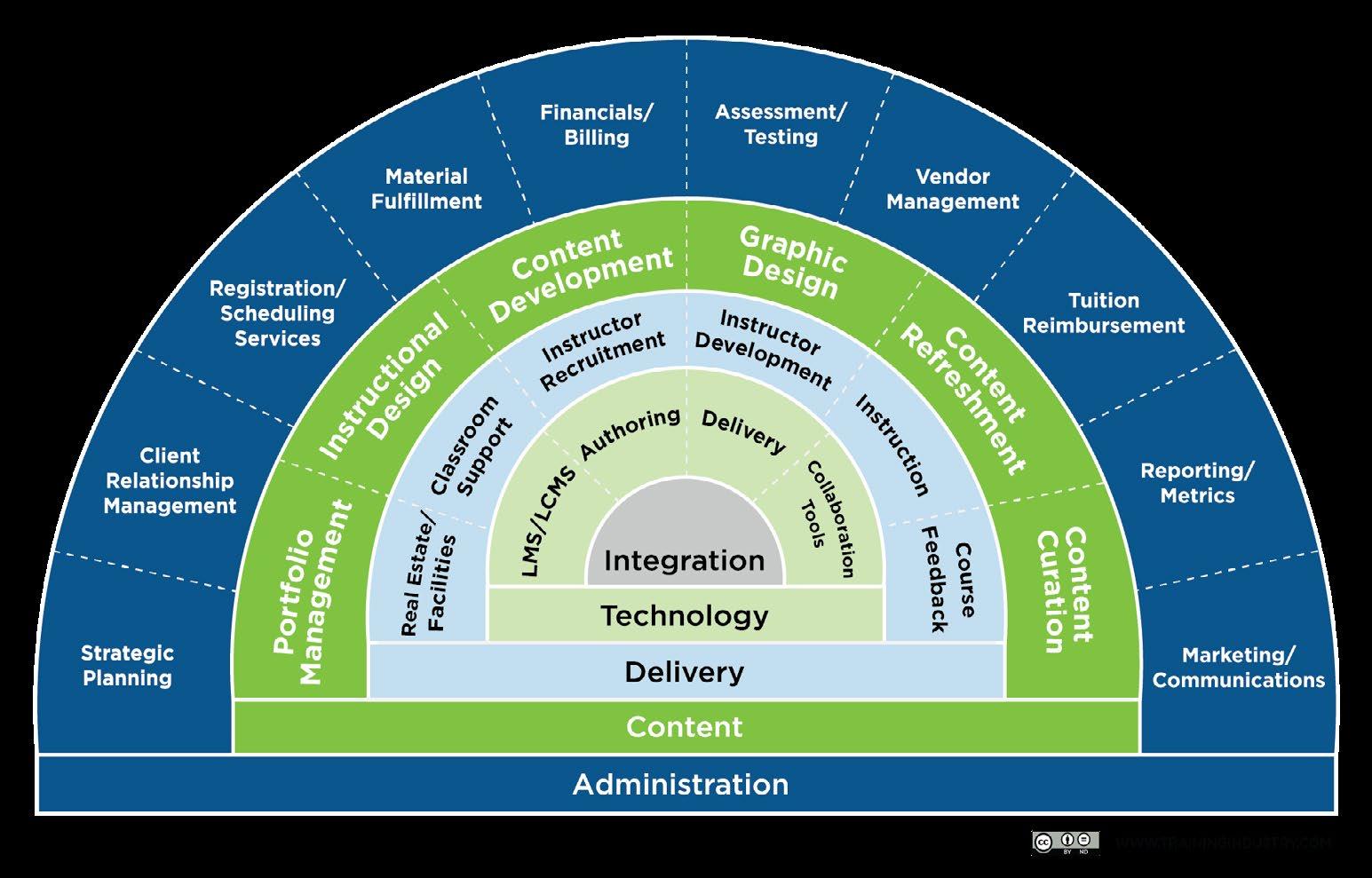
As a learning and development (L&D) leader, you may find yourself with few to no direct team members. Yet, you are responsible for the readiness and mindset of your entire organization. In fact, you may ask yourself at times, “How am I going to make success possible?” You may even refer to yourself as an “army of one.” However, while seemingly appropriate, this mindset can be limiting.
In 2001, the U.S. Army introduced one of its most short-lived recruiting campaigns around the slogan, “An Army of One.” Initially, the campaign was wildly successful in meeting its recruiting goals, but as Dr. Frank Luntz illustrates in his book, “Words That Work: It’s Not What You Say, It’s What People Hear,” it quickly faded because the idea of individually accomplishing the mission was counterintuitive to the essence of teamwork. Even if each soldier is fully equipped and skilled enough to tackle the objective, the mission will always require a cohesive extended team with a variety of talents to be truly successful.
The magic resides in how you define your team and the degree to which you can influence internal stakeholders and leadership. The L&D function cannot exist in a vacuum
if it is to achieve the goals of the organization. It must be nurtured by the involvement and interactions of organizational contributors who form your extended team. Relationships, not individual bravado, are essential to success.
In this article, we will explore insights and strategies for thriving as an L&D team of one and how to build an extended team of your own.
To really assess the concept of an L&D team of one, let us first examine the components of a successful L&D program. Training Industry’s Training Process Framework delineates five major functional groups:
• Administration.
• Content.
• Delivery.
• Technology.
• Integration.
Within these five functional areas, there are 26 processes that follow learning elements from inception to integration. You may be wondering, “How many L&D staff are needed to execute all 26 processes?” Various industry surveys share that organizations typically have 3-4 L&D staff per 1,000 learners and data from Training Industry’s Career and Salary Survey indicates that some L&D teams include five or more people for 1,000+ learners. So, how can you succeed with only yourself?
Delivering results as a team of one that are commensurate with a fully staffed team is no easy feat. Regardless of your passion, your expertise or your drive, you may find yourself falling short somewhere, whether that be job duties, work-life balance, personal development, etc. In some cases, the traits that make you an excellent learning leader may even exacerbate these challenges.
Some of the common challenges that you may run into are:
1. Time Constraints: L&D teams can be overrun with worthwhile requests, but
there are only 24 hours in a day. Even if you worked every one of them, you would still not have enough time to do it all (even if you had an army).
2. Prioritization: L&D teams are called on to solve a variety of problems and serve a diverse customer base, which often results in an endless stream of incoming requests and tasks. Determining where to invest your limited time and energy, as well as what (and who) should take precedence, is a cumbersome task, especially when it falls on just you.
3. Saying “No” or “Not Now”: L&D professionals are in the service industry. You may feel obligated to say “yes” to your customers and overcommit yourself, rather than refuse requests. If you do manage to say “no,” it may leave you with feelings of regret, especially when you’re presented with new ideas, initiatives or opportunities.
4. Being Effective Without Direct Reports: Having direct reports source and contribute their recommendations allows L&D leaders to leverage a variety of professional expertise, insights and perspectives. Without direct reports, you lack contributors whose attention is wholly dedicated to specific focus areas of your L&D function and there is no backstop for bad ideas (or at least not-best ideas).
5. Meetings, Meetings and More Meetings: This is a double-edged sword. Collaboration is essential for conducting a needs analysis, content creation and strategic alignment. Without these organizational signposts, the L&D program’s value will be lost. However, you must constantly assess time spent as a tradeoff: The more time you spend in meetings, the less time you’re spending producing content, calibrating systems and assessing performance.

6. The Belief That You Have to Do it all Yourself: This is probably the most sinister of the challenges. It can infiltrate all levels of your mindset and thinking because when it inevitably becomes apparent that you cannot do it all yourself, it can leave you feeling less competent, less capable, less credible and alone at moments.
Remember, you are not actually an “army of one,” nor should you be.
The good news is that, while taxing, the challenges you’re facing are not
insurmountable — and you’re not alone. Here are six ways you can improve your effectiveness and maintain your resiliency.
1. Celebrate Your Wins: Early personal recognition of what’s going well will help frame where you should go next. Also, internalizing your successes will help you leverage techniques and approaches in other endeavors. The list of things that could be done better is seemingly never-ending at times. However, the wins that differentiate us, the ones that result from your personal drive and expertise, are the ones that will carry you through ambiguity and doubt.
2. Share Your Successes: Generate positive energy around the things that you’re doing, and you will inspire people to buy into what it is that you’re trying to accomplish. No one will really know what it takes to be successful more than you, so highlight when things go right (as a bonus, this will also help your manager advocate on your behalf).
3. Be Transparent: If you’re not authentic, people will see through it. Communicate openly and honestly with your teams and manager. Share when things are going well,

but more importantly, be clear when expectations are not likely to be met. If you are transparent, you are more likely to have resources offered before you need them most and your extended team will be able to better capitalize on your success.
The L&D function cannot exist in a vacuum if it is to achieve the goals of the organization.
be fulfilled at all. Being deliberate and prioritizing requests may allow those things to resolve themselves without your intervention, while addressing both lack of time and prioritization challenges that you may be facing otherwise. That said, be judicious when you say “no,” communicate clearly on the “why” and actively participate in finding alternatives.
5. Give Yourself Permission to Fail:
If you don’t allow yourself to fail, that means you’re not trying hard enough or you’re not trying to do enough things. In fact, research has shown that the optimum failure rate for learning is 15%. It is at this point where the act of pushing yourself can generate the best rewards. Some things won’t work, but that’s where you can get the most learning and growth.
6. Mentorship Matters: Mentorship allows you to grow and learn from others, and it builds relationships with people that would otherwise not develop. You can’t get anything done without relationships, especially as an L&D professional. The extra benefit of mentorship is that it goes both ways. The mentee and the mentor grow in the process. By reaching out for or giving guidance, you can open yourself up to a host of insights that can reshape your approach.
ingredients to engage your extended team members outside of L&D:
1. Look at the moments you spend working with other people as opportunities to be a part of their success story. If you look at it that way, you approach working with others differently.
2. Share why each initiative is uniquely enriched by that individual and how they’re uniquely positioned to push a project forward. Success or failure, they are involved.
3. Organize opportunities for collaboration and connection with people outside of the L&D space and enable strategic relationships across the business. Ensure they have a regular cadence, allow for sharing personal insights and inspire a collaborative partnership that is mutually beneficial.
4. Be cognizant of the pain points of others and find ways to help alleviate them.
5. Encourage and enable stakeholders and team members to be successful.
6. Create positive energy and inspire others to participate.
4. Resist the Urge to Say “Yes” to Everything, or Risk Failing Everyone: Your insight and expertise are highly valued, but not every request needs to be fulfilled by solely you. In fact, if the request is not strategically aligned to the business, it perhaps should not
It can be difficult to gain buy-in for your training programs, let alone keep those in other departments actively engaged and eagerly volunteering to contribute to your programs. Enabling and encouraging targeted workstreams will allow you to accomplish specific mission objectives. In his book, “Leading Without Authority,” Keith Ferrazzi introduces the idea of coelevating with those that you add to your team. To do that, you will need six secret
Remember, you are not actually an “army of one,” nor should you be. As a solo L&D leader, you have a duty to leverage the business to help you serve its most pressing challenges. If you focus your mission on influencing others to help deliver results, you will discover an extended internal team that will bring in diversity, expertise and resources needed to accomplish your mission.
Robert Johnson, CPTM, PMP, is the global senior manager of project manager training at Thermo Fisher Scientific, Inc. Email Robert.

Learning and development (L&D) is vital for any organization. The journey to establish a training budget can often start with ambiguity around cost structures from L&D vendors. The questions linger: How much will it cost? What exactly am I paying for? Are they a good facilitator? These uncertainties can leave decision-makers feeling adrift when seeking guidance and partnership.
You don’t have to go into building your budget blindly, however. This article will share some areas to consider as you build out your initiatives and best practices for how to establish your training budget.
Training Industry research indicates that the global investment in L&D will reach $395.2 billion this year.
If spending this type of money on training seems like a lot, consider that this is an investment that pays off when people work better and smarter because of what they learned.
Imagine a team leader is struggling with interpersonal communication and building rapport with their team. They address it effectively using the tools acquired in their L&D program. Now you’ve regained the training investment.
The alternative is broken relationships, disengaged employees, wasted time, misunderstandings and confusion among the team members, or even dragging human resources (HR) into spending a whole bunch of time and effort to sort things out. In essence, it’s more costly not to lean into the development of your people.
Creating a plan is like drawing a map that shows everyone on your team where you’re heading for the next year. Imagine your budget as a way to tell a story. It’s not just numbers, it’s a way to show them what you can achieve together.
When following the tips below, think in grandiose ways. It’s better to get a big plan plotted out, and then work with your leaders to fine-tune and identify what’s most important.
Start by understanding the company goals so you can develop and deliver training programs that assist in the achievement of those goals. What specific skills and knowledge does

your team currently have, and what will they need to have in the future?
Asking your team for ideas is a good place to start. Conducting employee surveys can help you determine the knowledge, skills and abilities (KSA) gaps across the workforce so that, where possible, you can close those gaps through training programs
Additionally, qualitative data collected on a survey, or via focus groups or interviews, is a great way to uncover information. And by involving your employees in the decision-making process, you communicate that you value them, and potentially gain their buy-in for your programs.
You might ask in focus groups, for example:
• What work processes could we improve?
• What’s the most challenging part of your job?
• What skills would you like to develop to better function in your role?
• Do you get the information you need to do your job effectively and efficiently?
If your company’s goal is to increase employee retention by 20%, for example, it’s important to consider what organizational and interpersonal challenges exist, so they can be addressed, and the goal can be reached. You can assess both types of challenges through assessments and by reviewing stay and exit interview data, for example.
Perhaps, you uncover that the organization needs to adjust processes for hiring, onboarding and managing performance, and that managers aren’t leading in ways that create retention. In addition to teaching the new skills that go along with these new organizational changes, you can also deliver training on giving kind and candid feedback and proactively creating a respectful team environment. Between adjusting individual behavior and organizational systems, you can achieve your goal.
• Does your manager coach you when you’re feeling overly challenged or lacking the knowledge to accomplish a task?
Keep in mind that training on its own doesn’t usually solve problems. At this point, you’re simply making a “shopping list” to uncover all possibilities for training topics that could help achieve organizational goals. Once you decide what’s most important and how you’ll teach that information, you can begin planning your budget.
Imagine your budget as a way to tell a story.
goals through training. You can also regularly revisit and adjust the budget to ensure it stays in line with evolving organizational needs and priorities.
Choosing the right delivery method is key to maximizing your training budget. Here are some options to consider:
In-person training can be great for team-building as it is very interactive, but it can also result in some pretty steep expenses. You have to factor in travel and accommodations, the training venue, catering costs and training materials.
Virtual instructor-led training, on the other hand, is a more cost-effective option that can bring together your entire team. Live online training can often be as interactive and effective as in-person training with the right amount of activities and discussion, and a trainer who creates a safe online space.

Break down all the costs (e.g., materials, trainers, overtime pay for attendees) and now your budget allows for a clear understanding of the financial commitment required to drive toward the organization’s
Asynchronous online training is likely the most cost-effective option and is most often used for topics that require some learning activity but not a lot of discussion. Topics related to compliance (e.g., new policies, government regulations, etc.) are often taught in this format.
Blended learning is a great way to go as this method can reach people in ways and timeframes in which your workforce might need information. Your budget will depend entirely on how many educational avenues you pursue and what they entail. Blended learning could include, for example, one asynchronous course, an ongoing email chain of short videos or articles, some activities to complete on one’s own and some learning delivered by other team members.
There are a few options for providers: you can do it yourself (in-house), bring in an external training provider, build an online course in-house, or locate a vendor with pre-built courses (e.g., LinkedIn Learning, BizLibrary, Udemy, etc.).

When employees are happier and work better — and the company does well — it’s totally worth it.
The decision depends on the topic and the expertise required to deliver it. Obviously, a new internal organizational process is best trained by the creator or monitor of that process. A training topic that requires expertise in topics outside of the organization’s knowledge, however, may be better delivered by an external provider.
If you’re thinking about leaning on a pre-built online course, first consider if it’s the best way to deliver information and inspire your team to make the change you seek. Sometimes, online courses might not be as effective in connecting with your team, facilitating the changes you need for your business or sending the right message about the importance of a topic.
Once you’ve set up your training program, keep an eye on how things are going and be ready to change course if needed. Is the training working? Are people understanding what they’ve learned? Are they struggling to implement anything? Checking in with your team and taking in the feedback helps you understand if the program is hitting the mark or if adjustments are needed.
You can monitor progress by asking your workforce through quick surveys, having candid one-on-one conversations, using anonymous polls during training sessions, and reviewing whether the business goals that drove the training program in the first place are being met.
L&D helps employees grow and improve in their roles. A positive and inclusive workplace culture not only enhances employee satisfaction but also plays a pivotal role in driving overall organizational success.
In the long run, the benefits of investing in training to cultivate a positive workplace culture extend beyond individual job satisfaction, positively impacting the organization’s bottom line and competitiveness in the market.
It’s important to note that good training may not be free or cheap, but improved productivity and better business outcomes are just a few of the many rewards. When employees are happier and work better — and the company does well — it’s totally worth it.
Catherine Mattice, MA, SPHR, SHRM-SCP, is the founder/CEO of Civility Partners, a strategic organizational development firm focused on helping organizations create respectful workplace cultures and specializing in turning around toxic work cultures. She’s an HR thought leader, award-winning speaker, consultant, coach, female business owner, book author and blogger, and has 50+ courses reaching global audiences on LinkedIn Learning. Email Catherine.

Consider that you are providing harassment prevention training to new hires. If an asynchronous course is delivered online in a new employee’s first few days of work, among a bunch of other training programs and paperwork, you’re signaling that this topic is not really important. However, if the training is delivered in person and in small groups where people can have real discussions about this difficult and emotional topic, you signal that the topic is important and you want people to engage and learn.


The demand for learning and development (L&D) professionals is on the rise. Many factors have led to this increased need for L&D expertise, including advancements in technology and a shifting perspective on the strategic role of L&D in addressing business challenges. However, navigating your career as a learning professional is challenging. The pathway to landing a job in L&D is not linear — and the skills, knowledge and experience that L&D professionals need to grow in their careers are evolving.
Training Industry, Inc. is dedicated to supporting the career advancement of L&D professionals, which is the inspiration behind our L&D Careers and Salary Survey. This research effort investigates the career needs and salary benchmarks of training professionals across organizations and industries. This report will share the survey results from more than 370 learning professionals to help you understand the factors you should consider as you navigate your career and compensation as a training professional.
Our survey asked L&D professionals a variety of questions to better understand how L&D is structured within their organizations, including job titles, size of the training team and where the responsibilities for training reside within the business. The results revealed the following:
• Job Titles: The most common job titles represented in the sample were training managers, directors of training, content developers and instructional designers.
• Training Structure: The majority of the sample was housed either in their organization’s HR department or within a centralized L&D department.
• Work Arrangements: L&D professionals were more likely to work in person in 2023; 14% more L&D professionals reported a fully in-person work arrangement than in 2022. The level of hybrid work remained relatively stable between 2022 and 2023, while the level of remote-only professionals declined in pace with the increase in in-person-only professionals. (See Figure 1.)
• Work Hours: The learning professionals surveyed tended to work between 40 and 50 hours a week and were slightly more likely to work greater than 40 hours than they were to work 40 hours or less. (See Figure 2.)
• Size of Training Team : The size of a learning professional’s team depended on the size of their organization. Nearly 1 in 3 small organizations (less than 100 employees) employed just one training professional, whereas 1 in 5 moderately sized organizations (between 100 and 1,000 employees) employed only one training professional. Once organizations reach 10,000 employees or more, their training teams tend to grow, often exceeding 20+ training professionals. (See Figure 3.)
The learning professionals felt a sense of identity and satisfaction with their work, agreeing that their job was a big part of who they are and disagreeing that they are planning to leave their company or look for new jobs. (See Figure 4.)
Interestingly, among each of the questions related to their feelings toward work, only “I can never seem to catch up at work” showed any relation to salary; professionals who struggled to keep up with their workload also earned the highest salaries. Unsurprisingly (and perhaps unfortunately), those with higher salaries generally tend to feel more overwhelmed with their work. Similarly, higher-salaried L&D professionals also tended to work longer hours per week.
Our study strived to better understand compensation for L&D professionals. The results revealed that the overall median salary for a training professional is $100K. Figure 5 details the breakdown of salaries across a variety of factors, including job title, industry and size of company. While we found that salary did not impact job satisfaction — L&D professionals tended to demonstrate high levels of job satisfaction regardless of salary — we noted that personal professional development budget was related to satisfaction, with those working for companies that invest in their professional development reporting higher satisfaction. This suggests that learning professionals want to develop themselves, and they prefer organizations that will support their growth.
The highest-salaried learning professionals had a few key aspects in common:
• Mastery of the Training Manager Competency Model™, particularly strategic alignment, needs assessment and selecting and managing resources.
• Participating in professional development, including internal training programs as well as external training programs and conferences (both virtual and in-person).
• Completing a professional certification program.
• Holding a master’s or doctoral degree.
(Columns represent number of employees at the organization, rows represent number of training professionals employed.)
I worry about my job security.
I often think of leaving my company.
I may look for a new job next year.
I can never catch up at work.
My job is a big part of who I am.
I can count on my manager.
I understand my job responsibilities.
Overall, I am satisfied with my job.
• Maintaining a leadership position with direct reports.
• Experience — years in the workforce was positively related to salary.
• Working more than 40 hours per week.
Our survey also considered the career aspirations of L&D professionals, as well as the skills and development that they believe they need to grow in their careers. Becoming a director of training or chief learning officer (CLO) was the most common career goal for training professionals. However, nearly 20% of the sample indicated that they do not feel like they have the skills necessary to reach their professional development goals.
Given these career goals, L&D professionals seemed to have a realistic picture of the types of skills that would best prepare them to achieve those goals, focusing on development needs in areas like business acumen and strategic alignment. The topics that were most commonly called out as professional development needs were:
• Strategic alignment.
• Change management.
• Process optimization.
• Stakeholder communication.
• Competency model development.
• Business acumen.
NEARLY 20% OF LEARNING PROFESSIONALS INDICATED THAT THEY DO NOT FEEL LIKE THEY HAVE THE SKILLS NECESSARY TO REACH THEIR PROFESSIONAL DEVELOPMENT GOALS.
When it comes to dedicating time to professional development, our survey respondents are prioritizing their learning. Over 90% of learning professionals indicated that they engaged in some form of professional development over the past year but found professional certifications to be the most beneficial form of development.
We hope you can use these insights to better benchmark and navigate your career and salary as an L&D professional.
Alyssa Kaszycki is the learning product manager at Training Industry, Inc., where she helps determine the needs of training managers and create course content to help them reach their professional goals.
Amy DuVernet, Ph.D., CPTM, is the director of training and development at Training Industry, Inc., where she oversees all processes related to Training Industry’s courses for training professionals. Email the authors.
Developing your skills as a learning leader is essential to have the expertise needed to manage the business of learning. Here are some resources to help you navigate your career journey:
• Navigating L&D Career Transitions: Tips From L&D Professionals Who Know
• How to Assess and Bridge Your Skills Gaps as an L&D Leader
• Internal Consulting Workshop
• 10 Best Practices for Leading a Great Training Organization
• The Certified Professional in Training Management (CPTM™) Program
Hosted by international thought leaders, Training Industry webinars provide timely and strategic information about the business of learning. Stay up to date on the latest trends to enhance your training strategies. Ready to leap into a galaxy of knowledge? Explore free webinars and on-demand content at www.trainingindustry.com/webinars. EXPLORE FREE WEBINARS
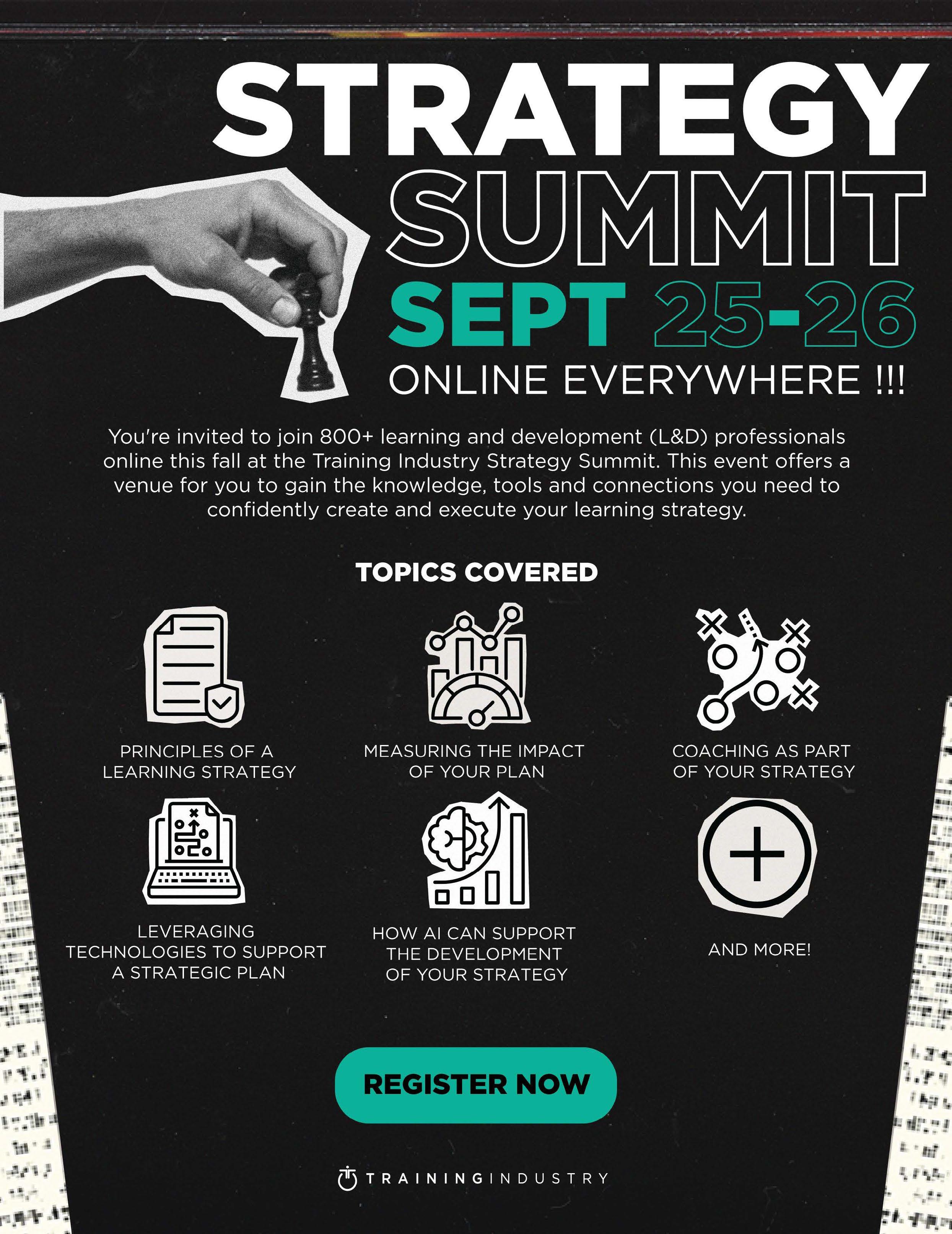
Whether your organizational development goals are focused on training or performance support in the flow of work, we’ve known for a long time that learning and performance assets must be customized for the preferences of the learner in order to improve outcomes. Our current system of learning asset creation allows us to create core learning assets as described in these (abbreviated) steps:
• Define overarching business and learning strategy
• Define curricular objectives and competency or task-based learning paths to support learning strategy.
• Create core learning assets aligned to the learning strategy (e.g., PowerPoint presentations, supporting job aids and performance support tools, formative and summative assessments, etc.).
Everything is fine up to this point, but take a moment and picture what learning and development (L&D) professionals have historically done to achieve differentiated instruction and content personalization:
• Assess the needs of specific learners or the context in which tasks must be performed.
• Make a copy of the core learning assets (i.e., a copy of the PowerPoint presentation to be used in a webinar).
• Customize the core learning assets to best meet learners’ needs.
What happens with those customized copies? Often L&D professionals save them locally — outside of approved systems — and go back to them again and again. This creates a few problems:
• Incorrect information is presented to learners when instructors keep working from their locally saved copies and miss the latest updates.
• Keeping instructional content up-todate is time-intensive and expensive, as making even a small change (like the name of a product) will take a long time if it has to be changed in multiple copies of every learning asset.
Reusable learning content provides a technical tool that enables L&D professionals to achieve differentiated instruction without the inefficiencies and additional risk associated with managing copies upon copies of learning assets.
Reusable learning content is not a copy. Here’s a simple example: Most organizations deliver annual security training that explains the basics of phishing and password security and most of that content could be delivered effectively with the core learning assets described above. But often phishing attempts are customized to your organization — employees will receive an email or a text message made to sound like it’s coming from their manager. The training will be
much more effective if scenario-based learning also uses the name and title of the learner’s manager.
To achieve this, we would need to make (and maintain!) unique copies of the learning assets for each manager in your organization. This means one of two things: Either the cost outweighs the benefit and we don’t deliver personalized instruction, or we quickly create an unsustainable volume of copies.
When the core learning assets are created, we define which elements of the learning assets have reuse opportunities. We also define which parts of the learning assets would benefit from personalization. In this example, we would create personalized content for scenario-based learning The scenarios would exist as discrete, reusable content items which are then mapped to the core content.
It will take some foundational work to determine what kind of content you’re
working with and how it all fits together. Let’s explore some practical steps to take your learning content management to the next level. While walking through these steps, remember that the reuse opportunity varies with each piece of content.
Take an inventory of the content you have. Try to capture all the places it may live, whether that’s a centralized repository, instructional designers’ desktops or a shared file system. Once you’ve gathered the content, complete an audit of the quality. Is the content in good shape? Does it need an update? By determining what content you have to work with, you can give yourself an idea of what needs to be done to get content to the quality you need it.
Drawing on the previous example, maybe for one department you want to deliver a training that includes the basics of phishing and password security, while for the software engineering department, you include those two topics, but you also add a topic on code security. This is where you can define the reuse strategy for your organization — how is the content being reused by the standard copy/paste method? What are commonalities across training or across instructional materials?
Think of a reusable content model like a template. When you’re designing a new training, you follow a certain template that determines that you need a student guide, an instructor guide and accompanying slides. Within the instructor guide, you know you need an objective, lesson content and a section where you apply the lesson content to the real world.
The reusable content model is a blueprint for the discrete parts of the learning content and defines where they will fit into instructional materials
and types of learning. Rather than copying and pasting the content between the student guide, the instructor guide and the slides, the reusable content model defines that the relationship exists between these three and then uses the same piece of content across.
Make sure your content is consistent: If you use the same framework in your student guide, the slideshow and the instructor guide, but then the framework in the student guide has different bullet points, the framework in the slideshow has a light blue compared to the dark blue in the other two versions, etc., you’re not actually using the same piece of reusable content. You need to standardize one model that is used across these different things.
It’s time to combine the content pieces. Bring together the pieces of reusable content that you defined earlier according to your reusable content model to create the collateral you need. You now have a better idea of what you have, how it fits together and is reused and where the opportunities are to personalize the content for the learner. With the help of metadata, you can automate some of this assembly process so that your instructional designers can focus on personalization.
Gone are the days when a single learning management system (LMS) was sufficient. The specific tools you’ll need will depend on your learning strategy. However, regardless of what tools you select, each product you buy or build should be critically evaluated for where it sits on a spectrum from closed to open. If a vendor’s tools only work within their own closed ecosystem, be wary. No learning technology ecosystem can handle all the complex demands of learning strategy and enterprise content management.
Depending on the specific needs of the learner, different learner experiences may be called for. This may require multiple distribution channels for your content. Here are a few examples:
• Instructor Led: For some instructional strategies, learners may need to interact with a trainer in a classroom or webinar. In those instances, we may publish learning assets to be leveraged by the instructor.
• LMS: This is the optimal learner experience for formal learning, management of learner profiles and building transcripts and certificates.
• Learning and Performance Portals: Often necessitated by the need for accessibility by an external audience, or a way to present discoverable learning paths that dynamically assemble learning content from multiple content repositories.
Learning assets are first designed to align with learning objectives and the reuse strategy is defined by the content engineer. After learning assets are designed, they are created by content developers and multimedia specialists. After this, learning assets are organized by knowledge management experts who ensure the right metadata strategy is applied to correctly map the right learning assets to the right learners.
Organizational performance improves when learning assets are contextualized. With the proper content reuse strategy, individualized learner needs can be met without burying your team in an avalanche of learning assets. This decreases the cost of maintaining content, decreases the organizational risk of presenting incorrect or outdated information and empowers your learning team to spend their time
delivering better learner experiences rather than muddling through outdated content technology and processes. It’s time learning organizations move away from copies and duplicate content and toward reusable learning content.
Rebecca Wyatt is a partner and division director of technology solutions at Enterprise Knowledge, LLC.
Emily Crockett is a content engineering consultant at Enterprise Knowledge, LLC. Email the authors.
IF A VENDOR’S TOOLS ONLY WORK WITHIN THEIR OWN CLOSED ECOSYSTEM, BE WARY.
Tune in to Training Industry’s award-winning podcast to hear conversations with industry experts on topics pertaining to the modern learning and development (L&D) professional.
Enjoying the podcast? Let us know! Leave a review on your favorite podcast app.
Have an idea for a future episode, or would you like to be considered as a guest speaker? Email us at editor@trainingindustry.com.


After you’ve gotten approval to deliver an enterprise solution, the idea of implementing the solution can be daunting. There are critical steps to keep in mind whether you are delivering to an audience of 15 or 150,000. Standard learning and development (L&D) models (i.e., Kemp, ADDIE) provide frameworks to create learning experiences, but you will need an approach to map the successful delivery of the solution across small or large audiences. The approach includes formulating the project team, building a communication strategy, implementing the solution and measuring the results.
First things first, you need to build the ultimate project dream team. An ideal project team consists of individuals who act in an advisory capacity and represent stakeholders (i.e., human resources; diversity, equity and inclusion (DEI), etc.). Members could include a project manager, communications consultant, learning management systems (LMS) operations, workforce scheduling, facilitation planning, instructional design, vendors and business partner representation. A diverse team generates ideas and informs the project team. If your L&D team is small, include adequate representation as allowable.
The project team should include work streams to create roles and responsibilities that align with key
milestones and deliverables. The work streams should focus on three core areas: communication, implementation and measurement. Let’s examine each of these work streams.
The communication work stream is one of the most extensive. Identifying key stakeholders is an initial step in the development of the communication plan and strategy. Stakeholders should include learners, leaders, partners and other entities who have a need to be informed of the initiative. Your workflow might look something like this:
Create your communication strategy: Develop a communication matrix that outlines the dates, audience, key messages, communication channels and message outcomes.
Communication matrix: Develop a clear and concise communication matrix that directs responsible parties on what is expected of them. For instance, the
matrix might follow the who (audience), what (message type), how (method), when (schedule), and owner (message source) format. Another example might be based on what the team plans to communicate (i.e., reports, project announcements and presentations) and include a description, deliverable, method, frequency, owner and audience.
• Utilize existing communication channels: Leverage company emails, employee resource group email lists and line of business communication teams.
• Develop frequently asked questions (FAQs): Anticipate common questions and share the document with key stakeholders and managers.
• Practice pre-messaging: Share the message with key partners prior to sharing it with the broader organization. For instance, share with managers first before sharing with learners.
• Communicate: Inform the learners of the training impetus and compelling reasons to complete the training, and
A SUCCESSFUL LAUNCH HAS THE POTENTIAL TO INCREASE ORGANIZATIONAL RESOURCES WHILE CONTRIBUTING TO THE BUSINESS’S BOTTOM LINE.
thank learners for their participation in advance.
• Observe enrollment numbers: Determine the frequency of reporting and channels.
• Communicate again!
The implementation work stream includes logistics, infrastructure and format. Logistics must be considered if there is a synchronous or asynchronous course being delivered and a portion of the workforce requires time away from their workstation. The individuals on the workstream should include the facilitator of the course, if necessary.
• Logistics: If the course will be delivered in the classroom, rooms need to be requested and identified. If delivered via virtual classroom, the infrastructure and platform should be determined during planning. Once the format is selected, testing should occur to ensure the format is ready to go on the day of implementation.
• User insights: Prior to launch, provide a preview of the content to a select group of employees to gain feedback.
• Sponsor feedback: Prior to launch, share a preview of the content to the project sponsor. Share user feedback with sponsor and areas where feedback was implemented.
The measurement work stream includes gathering data and reporting results. It should be led by someone who has access to data and reporting and can provide data summaries and insights.
• Measurement strategy: The measurement strategy is the specific approach to share data, including the type of data and the frequency at which you plan on sharing results. For example, if data is available in the middle of the month, set the expectation that data will be available at the end of the month. Set attainable goals for completion (i.e.,
50% of the population will complete the training).
• Data: Data should include information that’s readily available. If there are preexisting training insights dashboards, leverage the data supplied in the dashboard. Be creative in leveraging completion, Level 1 and Level 2 data.
• Results: Structure the data in a manner that demonstrates relevant impact (i.e., by leader, level of employee, line of business). For instance, you may want to present Level 1 data as favorability insights or completions data as utilization insights. Level 1 data can be presented in the form of NPS scores if the organization is open. Repeat reporting data and ask for feedback from others to determine if the data is relevant.
The information shared so far will get you to the week of implementation. L&D teams must also consider the project team culture, issue resolution, endorsement and minor recommendations to achieve optimal impact. Here are some additional considerations:
• Create an inclusive culture on the project team where all voices are considered. Allow the project team to make low- to mid-risk decisions collectively.
• Leader/sponsor endorsement is important. Therefore, the initial message should be sent by the course sponsor.
• Bring a DEI lens to communications.
• During launch week, host daily calls to address concerns that surface.
• Share feedback with vendors to keep them informed of reactions to the course.
These recommendations could be applied in both large and smaller organizations. Remember, implementing learning solutions successfully builds credibility with senior leaders and demonstrates your strategic partnership. A successful
Don’t overlook the details: The implementation of your learning project can be impeded if someone is not keeping an eye on the small things. Ensure that your project team is aware of all moving parts and is focused on what matters.
Consider time zones: If you have a global audience, account for after-hours delivery to ensure international audiences feel included.
Don’t double-book your implementation: It is important to monitor other business initiatives that may go live the week of your initiative. Your message will be lost. Ask for a calendar of upcoming communications or initiatives to pick a time where you will have the full attention of your audience.
Centralize communication: If classes need to be canceled and rescheduled, provide a centralized support mailbox and assign multiple individuals to respond to feedback the week of implementation.
launch, if completed effectively, has the potential to increase organizational resources while contributing to the business’s bottom line.
Alaina Doyle has over 20 years of experience in L&D. In 2013, Alaina earned two master’s degrees from the University of Texas at Arlington in business administration and human resource management. Alaina earned her Ph.D. in learning technologies from University of North Texas in May 2023 and is a United States Army veteran. Email Alaina.

Finally...cutting edge, wildly engaging VR training modules that are affordable and hassle-free.


Take your DEI initiatives beyond compliance in 2024. Actively experience and practice DEI scenarios in VR.
Understand change leadership frameworks and how to manage human and digital transformation.
Understand and practice how to lead your team with compassion, empathy, and authenticity.
Bridge self-awareness with global perspectives to embrace cultural differences.

In addition to training on a specific skill or behavior, learning leaders also have the responsibility of recognizing and honoring the unique backgrounds, perspectives and learning preferences that individuals bring to the learning environment. These unique differences vary in cultural, social and cognitive contexts — these variables position learning leaders to serve as architects of learning experiences that not only acknowledge the richness of diversity but also actively leverage it to design impactful training. Let’s take a look at some best practices for achieving inclusive excellence in your training design.
Ever designed a training course or program only to realize you missed a huge opportunity to make a meaningful impact? This often occurs when we fail to consider the varied dimensions of the audience prior to design. Rather than jumping right into training design, we could all benefit from thinking about not just the learning outcomes, but also the lived experiences of those expected to apply the training in real time.
One way to achieve this is to apply scenario planning. Scenario planning in the context of training design includes thinking through every possible scenario for how a learner might use the training outside of the training environment. This includes being mindful of what benefits and challenges they might encounter.
Similarity bias is real. We typically see this type of bias play out when hiring managers are recruiting new team members. At first glance, the hiring manager is likely to hire someone with a similar skill set to
them, rather than hiring and selecting a candidate who can add value to the team. The same is true for training professionals.
At times, we design training based on our own personal experiences and learning preferences, rather than leaning into what is needed in the learning experience for training to transfer accordingly. A simple fix to this might be to review your internal needs assessment processes. Consider creating or modifying your training intake form to include fields or questions that will result in more human-centric responses that would better describe the training audience.
Throughout my own professional experience, I’ve discovered the most powerful tool one can have is a question. Questions enable us to expand our curiosity; in the realm of training design, questions serve as more than just tools to engage participants — they are the foundational pillars upon which the training professionals can achieve inclusive excellence: Questions open up avenues for meaningful dialogue and reflection.
When designing training programs with inclusivity in mind, here are two considerations:
1. The types of questions asked play a pivotal role in shaping the learning experience. While questions encourage curiosity, be sure your questions don’t create awkwardness for the audience.
2. Thoughtfully crafted questions can uncover insights into the varied
cultural norms and communication preferences prevalent within the audience. This could allow for the customization of training content and relevant discussion that resonates with each learner.
When we choose to begin with the end in mind, interrupt our own biases or leverage the power of questions in our training design processes, we create learning experiences that allow participants to not only deepen their awareness of cultural nuances but also develop a greater appreciation for the richness that diversity brings to the organization.
All three of these efforts go beyond the basics of training design — they embody a commitment to inclusivity excellence. What better way for learning leaders to celebrate the multiplicity of voices, experiences and perspectives that define our global workforce? Ultimately, it is through the power of well-designed training that we can unlock inclusive excellence one employee (and one organization) at a time.
Dr. Kristal Walker, CPTM, SHRM-CP, is the senior vice president of human resources at Sweetwater Sound. Kristal is also a facilitator for Training Industry’s Certified Professional in Training Management (CPTM) program. Email Kristal.
Meet Data Driven Learning Technologies that Strengthen Employee Performance at Every Level


Get new hires performing faster with learning that minimizes seat time and time to contribution

Develop and retain your people, and get them performing better with training that closes skills gaps

Minimize risk with truly adaptive content that guarantees topic mastery
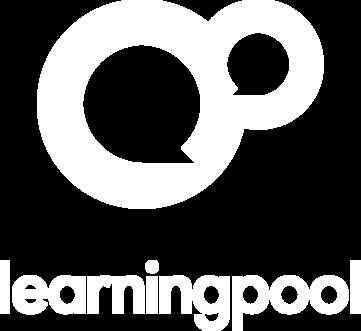

Consider that most learning and development (L&D) functions started with one person. Prior to that, organizations typically featured a strategy that was a mashup of sorts between onboarding and apprenticeship: “For the next six weeks, we want you to follow this ‘proven performer’ around and pay careful attention to everything they do. When you can do half of what that person does, you will be very good at your job!”
Gradually, the training function evolved into its own entity. It had to, really. Even though efforts to measure impact were archaic by today’s standards, organizations could still see an undeniable relationship between learning and increased profitability.
YOU HAVE THE OPPORTUNITY TO LEARN AT LEAST A LITTLE BIT ABOUT EVERYTHING.
So, the “next-step question” as learning continued to grow into a strategic priority became: “Who do we put into the training job?”
As we remember it, discussions on the skills needed to initiate the role often included (keep in mind that essentially all of these hires were internal):
• A track record of performance: Tenure with the organization, familiarity with its culture and a documented history of meeting expectations.
• Platform skills : Typically featured experience presenting background,
updates and projections to line management and occasionally senior management.
• People skills : Universally likable, dependable, approachable and responsive.
Suffice it to say, the role of L&D on the strategic landscape has expanded exponentially over the years, and today features clusters of integrated and sophisticated responsibilities:
• Administration : Internal marketing, metrics, materials fulfillment and registration.
• Content : Instructional and graphic design, development and ongoing refreshment.
• Delivery: Instructor recruitment and development, facilitation and feedback.
• Integration: learning management system (LMS), content management system (CMS) authoring and compatibility.
Each cluster, and in some cases, each subset, can be a job in and of itself. No way one person could possibly do all that effectively, right? The short answer is: No. But in reality, and for a variety of different reasons, there are indeed many L&D professionals who try!
In that regard, we recently had what can only be described as an exhilarating conversation with Edie Stulken, who is a one-person training department for an organization with a little over 1,000 employees.
We asked Edie to tell us a little bit about her job, and it was abundantly clear from the get-go that she thrived on her impossible circumstances. Her company was going through a difficult stretch, and she was playing a key role in navigating those waters. The company had no travel budget and no budget for outsourcing anything. As she described her reality, the age-old imagery of a bicycle wheel came to mind. She was the hub, and each of the departments and divisions she supported were function-based spokes that extended outward.
As Edie sees it, success in her role depends mostly on people skills. For example, if the company needs to do information technology (IT) training, she interviews a subject matter expert, then designs, develops and delivers a custom SharePoint module on the topic. The same goes for every other spoke in the wheel.
Frustrations aside, it struck us that if you find yourself in circumstances that resemble those described above, you have the opportunity to learn at least a little bit about everything. It’s like you can become a central repository of relevant knowledge for everything that is going on around you. And over the course of a career, because that will inevitably take one turn after another, imagine how that kind of experience would significantly enhance your value and increase your options.
Marshall Goldsmith is the world authority in helping successful leaders get even better. Sam Shriver is the executive vice president at The Center for Leadership Studies. Email the authors.
Explore our directory of 2,000+ L&D vendors. Search for and connect with verified training companies to solve your training needs.

Does your company provide training solutions? Sign up for a vendor listing.

Fifteen years ago, I was working at IBM on advanced learning technology to support employee growth. While on a trip to California, I met a former IBM employee who was a research scientist at Google. During a walking tour of the Googleplex, the scientist told me about his biggest challenge: While Google has a great search engine, we know little about how to use search effectively. Even Google engineers knew less than expected!
He began teaching people (including those engineers) about search, developing search skills and learning how to use search engines effectively for research.
Technology is often ahead of users. This is true with today’s generative artificial intelligence (AI) tools. We know AI is powerful, yet we need guidance to take full advantage of it. As with any technology, AI tools for your employees are only as good as their ability to use them.
To maximize the value of your technology investment, learning professionals need to audit existing technology systems to identify the most and least used features. Remember, you’re already paying for it, so you need to decide whether to use more of what you have or look elsewhere.
To determine the right learning technology, learning leaders must consider what their learning “north star” is. In other words, what is the purpose of their training? Whether it’s to check the box with compliance training or provide strategic value by integrating learning with organizational strategy, learning leaders must know the answer.
Divide your learning technologies into two categories: downside minimization and upside maximization . Downside minimization focuses on making sure bad things don’t happen, such as not missing compliance training. Most organizations focus too much on downside minimization. While being non-compliant is undesirable, the advantage of doing more than the minimum is unclear.
LEARNING LEADERS MUST CONSIDER WHAT THEIR LEARNING “NORTH STAR” IS.
Upside maximization deals with untapped opportunities in highgrowth areas for success. Many talent and learning and development (L&D) systems have a high upside when implemented strategically. Let’s explore how you can get the most upside from core learning technology systems:
• LMS: From Learning Content to Integrations
Most organizations push content to learners with their learning management system (LMS). While important, consider also using your LMS to integrate with other systems. Messaging, communication and collaboration tools such as Microsoft Teams, Slack and Zoom can facilitate learning and assist with managing and reporting on the learning experience.
• LRS: From Courses to Activities
Learning comes in all shapes and sizes. It’s important to capture who learns what, no matter how they did it. Consider using a learning record store (LRS) and
xAPI statements to get a holistic view of your learners’ skills. Generative AI tools can provide performance support so you can ask a question, get an answer and get back to work.
• LCMS: From Proprietary to Generated Content
Done is better than perfect. Many internally developed courses take too long or remain incomplete because of a quest for perfection. Sidestep this by focusing on speed using generative AI or a learning content management system (LCMS) to create courses specific to your industry, roles or subject matter. Use this as a foundation to start from and adjust as needed.
• LXP: From Crowded to Streamlined The promise of a learning experience platform’s (LXP’s) learner-centered, one-stop shop for all learning needs has led to a stuffy learner experience with excess surface-level recommendations. AI tools can go into the black box of learning content, understand it and use that knowledge to personalize learning for you.
From search, mobile, social, cloud, data and now AI, technology trends are always advancing. Invest in technology and processes that maximize the upside: You will see a clear benefit to L&D and the organization. And who knows, you may soon know more than the engineers who built the systems.
Dr. Nabeel Ahmad is an authority on learning sciences and technology. He leads the People & Organization practice at changeforce.ai, authors the Four Minute University and teaches at Columbia University. Email Nabeel.
The renewable energy sector has seen unprecedented growth over the past several years, with federal investments in renewable energy and the increasing demand for lithium ion batteries, spurred in part by the popularity of electric vehicles.
It’s not surprising that Deloitte lists workforce reskilling as among the top five key trends impacting the industry in 2024.
To better understand how learning and development (L&D) leaders in the green technology sector have been enabling their organizations to meet these growing challenges, I talked to Drew Krajewski, M.Ed., CPTM, chief learning officer at EnerSys — an industrial technology leader serving the global community with stored energy solutions.
EnerSys has 10,520 employees worldwide, with employees located in 35 different countries and who speak 18 different languages. “We support the organization with an [L&D] team of 19,” Krajewski says. “We are geographically dispersed as well, with team members in the USA, Mexico, Argentina, UK, France, Germany, Italy, Poland and Singapore.”
Krajewski’s day-to-day responsibilities are centered around directing all
BY MIKE ALLEN, CPTMof the training that takes place at EnerSys: “My regular responsibilities include representing the L&D team within the larger human resources (HR) Leadership Team,” says Krajewski, a responsibility that involves calculating and charting key performance indicators (KPIs) for senior leadership, prioritizing training requests, participating in audits, ensuring adherence to the company’s mission and vision and generally “acting as a conduit between senior leadership and our geographically diverse team.”
In the past, training at EnerSys was largely focused on compliance and safety, but shifting market forces are requiring new L&D approaches to keep up. “We are now moving toward a culture of skill development,” says Krajewski, a change that has come as a result of emerging upskilling needs at EnerSys’ manufacturing locations. Specifically, the L&D team has focused on skills development training for frontline supervisors, making sure that they’re equipped to handle the safe manufacturing of new tech, and all the processes that come along with it.
The challenges Krajewski faces at EnerSys can be broken down into two main categories: “The first is being recognized as a consultative partner,”
Krajewski says. With such a large and dispersed organization, it’s no easy task to keep everyone on the same page. Despite the team’s best efforts, there are still parts of the organization that develop and launch training programs on their own or seek out and engage with vendors before aligning with the L&D department.
LIKE EVERYONE, EVERYWHERE, WE ARE BEING ASKED TO DO MORE WITH LESS.
The second challenge, and one that Krajewski says will be familiar to most readers, is a lack of resources: “Like everyone, everywhere, we are being asked to do more with less, or at least with the same ... Even though we have a team of 19, we probably have work for 25.” In light of this, Krajewski is focusing on developing his team’s skills in areas like prioritization, project management and change management, which have become essential to L&D success for 2024 and beyond.
One of the core skills of a learning leader is the ability to align your training efforts with the business goals of the organization. Krajewski’s team
uses a lean management tool called the X-Matrix: A method of cascading goals from the top of the organization down, ensuring that fiscal year goals are aligned with the company’s goals.
In addition to the X-Matrix, EnerSys has an Academy Governance Board, which is made up of senior leaders from every department. The board exists to make sure that the training function doesn’t become siloed from the rest of the organization, and that L&D efforts remain aligned to the overall goals of the business. It also serves to ensure that EnerSys’ L&D team regularly has visibility with leaders from throughout the business.
One of Krajewski’s most well-received training initiatives has been the Level UP Program. The Level UP Program allows subject matter experts to earn a training certification (Academy Certified Trainer), which allows them to schedule and conduct training sessions on-site at their location or participate in monthly webinar offerings.
“Level UPpers have conducted sessions on how to use the internal job posting process, MS Excel, product training, systems training, DEI initiatives such as allyship, and a host of other topics,” Krajewski says. EnerSys currently has 16 Academy Certified trainers, and they’re beginning the process of recruiting a second cohort.
With programs like Level UP, Krajewski says, visibility across the organization is important. Krajewski’s team has made a concerted effort to showcase their “Level UPpers” during events like their annual Employee Learning Week.
Establishing specific key performance indicators (KPIs) is an essential step in any L&D team’s efforts to evaluate the success of their programs. Krajewski says that
his team tracks three KPIs, through their company intranet, and provides regular updates to the company’s academy governance board and HR leadership:
1. Retention and promotion for leadership development programs: Krajewski’s team has found that alumni of their leadership training programs are 26% more likely to stay with EnerSys. Alumni are also promoted at a rate nearly 50% higher than the rest of the company.
2. Completion of non-compulsory training on the company LMS: EnerSys offers a vast library of training material to its employees — but that won’t make a difference if learners don’t engage with it. Learning management system (LMS) engagement metrics help Krajewski and his team ensure that employees go to their training materials when they have a problem (and not YouTube).
3. Safety and compliance: To ensure that learners are keeping up with mandatory safety and compliance training, Krajewski’s team tracks training completion rates by line of business, with a policy of zero delinquency. They strive for zero required training to be past due; in cases where deadlines are missed, “we report that back to the line of business leaders,” Krajewski says, “so that there is accountability on the part of the employee.”
The team also publishes a quarterly scorecard that tracks learners’ qualitative and quantitative results from the previous three months.
Beginning this year, Krajewski’s team is working on moving EnerSys from traditional learning to a learning ecosystem model. “Rather than having a training model based on mandatory courses,” Krajewski says, “employees
would become a part of an ecosystem for engineering or sales, for example, where skills can be learned on demand, through experiences or as a part of a Level UP community.” Their goal is to facilitate more peer-to-peer learning and more leader coaching to help grow EnerSys’ talent and prepare them for new roles internally.
Krajewski’s team is also responsible for training in EnerSys’ manufacturing facilities. They are currently partnering with organizational stakeholders and individual sites’ HR teams to enhance and standardize the onboarding experience for employees, regardless of location, language, culture, etc. They are also pursuing augmented and virtual reality (AR and VR) options for training new employees and upskilling existing employees.
The L&D journey at EnerSys reflects a dynamic response to the evolving landscape of the renewable energy sector. In the face of global challenges and a geographically dispersed workforce, Krajewski’s team is successfully navigating the shift from a compliancefocused training culture to a culture of skills development. By aligning training efforts with business goals, leveraging lean management tools and rigorously tracking KPIs, EnerSys exemplifies a strategic approach to L&D. As the renewable energy sector continues to surge forward, EnerSys’s proactive and strategic approach to L&D positions them at the forefront of learning transformation in this dynamic industry.
Mike Allen, CPTM is an editor at Training Industry. Email Mike.
From product manuals and guides to subject matter expert (SME) documentation to online help, technical documents lay the ground for effective customer education, product and technical training and more.
These documents are important tools that can help educate employees and external users and customers on how to use different products and technologies. For example, for learning tech providers, they can help customers learn how to implement and optimize their platform or tool. For businesses, they can help employees get up-to-speed on how to use a new learning technology platform.
As products and technologies evolve, technical documents must be updated. Thus, effective training, whether it’s a customer, product or technical training course, relies on communication between technical document writers and course developers. However, these two functions are often siloed, and updates may or may not be communicated. Other challenges include scalability and efficiency: As new products are released and existing products evolve, creating and updating technical documents and courses can be a huge lift.
Here, we’ll explore how MadCap Software’s acquisition of Xyleme, Inc. is working to solve the above challenges and more to improve collaboration and efficiency between technical documentation writers and course developers.
MadCap Software’s content management solutions are designed to help organizations create, manage and deliver effective technical documentation and at scale. Anthony Olivier, MadCap Software’s CEO, has long recognized the opportunity to expand into the L&D space: “We’ve always thought there was overlap between technical documentation and
BY SARAH GALLO, CPTML&D within enterprises.” After all, the two groups technical writers work the most closely with are the SMEs they’re getting information from and the instructional designers creating and facilitating courses. So, when the opportunity arose to acquire Xyleme — a leading learning content management system (LCMS) provider — “we jumped all over it,” Oliver says.
Bringing its technical documentation solutions and Xyleme’s LCMS under a single solutions provider will help solve shared challenges.
Specifically, it will help to:
• Integrate content authoring and management capabilities: MadCap Software’s technical documentation authoring tools combined with Xyleme’s LCMS enables documentation writers to create and manage technical content within MadCap’s authoring environment. Then, they can publish it to Xyleme’s LCMS for content syndication and use in training.
• Streamline content reuse: Xyleme’s LCMS enables writers to create reusable components of technical documentation that can be incorporated into multiple courses. This streamlines the process of updating documentation and ensures collaboration and consistency.
• Provide robust analytics and reporting: Xyleme’s LCMS provides analytics and reporting capabilities that allow organizations to track the usage and effectiveness of technical documentation in courses.
• Consolidated tech stacks: The acquisition will help consolidate tech stacks — which Olivier notes is a priority for many businesses — bringing technical documentation and course development and delivery under a
single solutions provider where the tech stacks integrate and communicate with each other.
In terms of leveraging artificial intelligence (AI), Olivier says they’re taking a “threepronged approach.” The combined platform will leverage AI:
• For content development.
• For improved publishing, data analytics, content consumption and search.
• And to leverage all of the content and data created to train businesses’ large language models (LLMs).
Although misconceptions persist around AI taking the jobs of technical document writers and instructional designers, this isn’t usually the case. “Most of our customers are creating proprietary content,” Olivier says, and they don’t want to use ChatGPT or another tool to create it. As more training and technical content gets created, “solutions like MadCap that can maximize content reuse, manage and syndicate all the data components become even more important.”
Looking ahead, MadCap Software is focused on bringing together the solutions. That said, they aren’t trying to build a “a one-size-fits-all” platform and will continue to focus on different buyers’ needs (with Xyleme targeting instructional designers and compliance managers and MadCap Software targeting tech documentation managers).
“Our priority now is making sure the platforms talk to each other,” Olivier says. This will lead to greater collaboration and efficiency for course developers, documentation writers and, ultimately, ROI for the business.
Sarah Gallo, CPTM, is a senior editor at Training Industry, Inc., and co-host of “The Business of Learning,” the Training Industry podcast. Email Sarah
Accenture, the leading global professional services company announced that it has agreed to acquire Udacity, a digital education pioneer with deep expertise in the development and delivery of proprietary technology courses that blend the flexibility of online learning with the benefits of human instruction.
Degreed , the leading technology suite for lifelong learning and data-driven development, announced a partnership with BetterUp, the global leader in transformative coaching and inventor of virtual coaching. The partnership combines resources from both BetterUp and the Degreed learning experience platform (LXP) to deploy coaching and meaningful learning opportunities for organizations who currently use both platforms.
D2L, a global learning tech company, shared two new strategic partnerships with the American Society of Association Executives (ASAE) and Association Forum. Both organizations are dedicated to advancing association management and selected D2L as a partner to help provide learning solutions, best practices and insights to their constituents, helping boost engagement and experience for members.
Cornerstone, the global leader in learning and talent solutions, partnered with Explorance, the leading innovator in feedback analytics. This collaboration is set to leverage Explorance’s proficiency in measuring learning effectiveness, with Cornerstone’s people development and learning tech solutions to enable companies across North America to foster a feedback culture and promote action through decision-grade insights.
Udemy, a leading online skills marketplace and learning platform, announced the launch of its GenAI Skills Pack to support organizations around the world with the rapid adoption and implementation of indemand generative AI skills. The GenAI Skills Pack includes curated content, emerging skills and learning paths correlated to specific objectives.
GP Strategies announced the release of an AI training program, “Human+AI: Practical AI for Learning Leaders.” The program is geared toward equipping learning leaders with the knowledge and skills they need to leverage AI effectively
within their organization, learning and development (L&D) function and work.
FranklinCovey, the trusted leadership company, announced the launch of a new module, “Navigating Difficult Conversations: Turn Tension Into Progress™.” The module is intended to equip learners with the skills to balance courage and consideration as they navigate workplace conversations, helping employees and leaders respond effectively to emotional reactions in the moment.
Pluralsight, the technology workforce development company, launched
Simplilearn, the global digital skills training provider, extended its collaboration with Purdue University Online to introduce their new applied generative artificial intelligence (AI) specialization program. The program is designed to equip professionals with the essential skills and knowledge needed to navigate the rapidly evolving field of generative AI.
Go1, the comprehensive online library of learning and education resources, announced a strategic partnership with LMS365, the AI-powered workplace learning, engagement and performance platform built into Microsoft 365 and Teams. This partnership is intended to revolutionize workplace learning and productivity, making it simple to curate, navigate and roll out highly personalized learning materials to every employee.
AI sandboxes, a new immersive, hands-on experience where learners can practice AI skills and experiment with AI solutions. AI sandboxes allow users to safely experiment with preconfigured AI cloud services, generative AI notebooks and a variety of large language models (LLMs).
Congratulations to all of those who became Certified Professionals in Training Management (CPTMs™) in the past three months. We would like to recognize 91 graduates from diverse industries and roles around the world. Your accomplishment places you amongst an elite group of learning and development professionals. We cannot wait to see how you will lead the change!
GDIT
Charissa Brimage Maria Cockerham
Kapsch TrafficCom USA
Carina Burns
Eric Fancher
A’ysha Savage
ARPA-H
Adrienne Russell CVS Health
Albert Gonzalex El Paso Water
Amanda Pailet Atlanta Humane Society
Andrea Cronen Debut Consulting
Andrew Sutton Foodstuffs South Island
Anna Duffey Charlotte-Mecklenburg Police Department
Anna Halleen Compass Health
Anna Polasky Seabrook Island Club
Congrats to these graduates from the same company!
Skills USA
Karolina Belen
Michelle Martinez
USAA
Deydra Torres
Kashare Nelson
Mehgan Zheng
Boni-Lou Roberts Behaviorral Health Group
Brian McKenzie Hotchkiss Insurance Agency
Brittany Hannan Indeed Inc.
Carlon Cayenne Nutrien Trinidad Ltd.
Carmeisha Acree Bosch Service Solutions
Christina Clary
American AgCredit
Dan Sullivan Turf Masters Brands
Darcie Drymon Seed Company
Dena Messer-Herrera Arizona State University
Watervliet International
Dorothy Sellers
Joseph Didziulis Moriah Disco
WebHelp
Andre LeGoux
Patrizia Ligas
Douglas Baldwin US Patent and Trademark Office
Erika Cuevas TDB Communications
Hamad Alturki Altamayyuz Academy
Heather Backes Katz Sony Coporation of America
Herbert Kalisa SKOL Brewery Ltd.
Jake Byrd Duraline
James Robles HID Global
Jamie Baker BCB Homes
Jamie Doughtery Performance Contracting Group Inc.
Janice Hill Jones Street Residential
Jean Simnett Construction Solutions Group
Jessica Schlachter Aspen Aerogels
Jim Kehoe Brady Services
Judy Teart Argus Group of Companies
June Siefring Precision Strip
Kadi White Northwest Portland Indian Health Board
Kelly Coe Sigma Technologies Ltd.
Kevan Davey Medcor
Kristen Bratonja GE HealthCare
Kyle Hannon Albertsons Companies
Laura McGaw Magnolia Plumbing
Laura Carolina Moraporras Equifax
Lenisse DeBoer AdventHealth
Lisa Moore Success Tangent Business Consulting
Lok Lim Tan SumUp Limited
Macy Mader Yeti
Maddison Crutch RobLawMax Recruitment
Manuel Varelagarcia Lower Colorado River Authority
Marie Mazure
Hudson Valley Credit
Marie-Chantal Théberge House of Commons
M�rton Bencze-Szabó AGCO Unlimited
Mary Sajfar Transfrom44
Melissa Brown Holland and Hart
Melissa Summings Universal Services, Inc.
Michelle Sandoval Vituity
Natalia Egoshina Elite Learning
Nicole Zaun Northern Pennsylvania Regional College
Parker Sousa Saputo
Patrick Jameson PGT Innovations
Penny Davis Center for Internet Security
Rachel Verstegen Heartland Business Solutions
Raissa Singleton The Literacy Lab
Rhonda Evenson VHA Institute for Learning, Education & Development
Robert Babcock AYS INC.
Robert Jaeger Maximus
Visit trainingindustry.com/cptm to learn more about how you can earn the CPTM credential and join over 2,000 CPTM graduates.
Scott Barrow IAPP
Seana Marceau Fox Rothschild LLP
Shana Norin Levo FCU
Stephanie Minner A-Gas
Stephen Goetz Starbucks Coffee Company
Steven Horton Medline Industries, LP
Tamara Al Tomaki Flydubai
Theresa Heron Beckley Enterprises
Tiffany Vojnovski SweetRush
Valerie Bergloff DFPS of Texas
Wilm Van Roy Video Meets Light bv
Stephanie Diaz
Sunil Amaan Ramakrishnan
Wade Watson

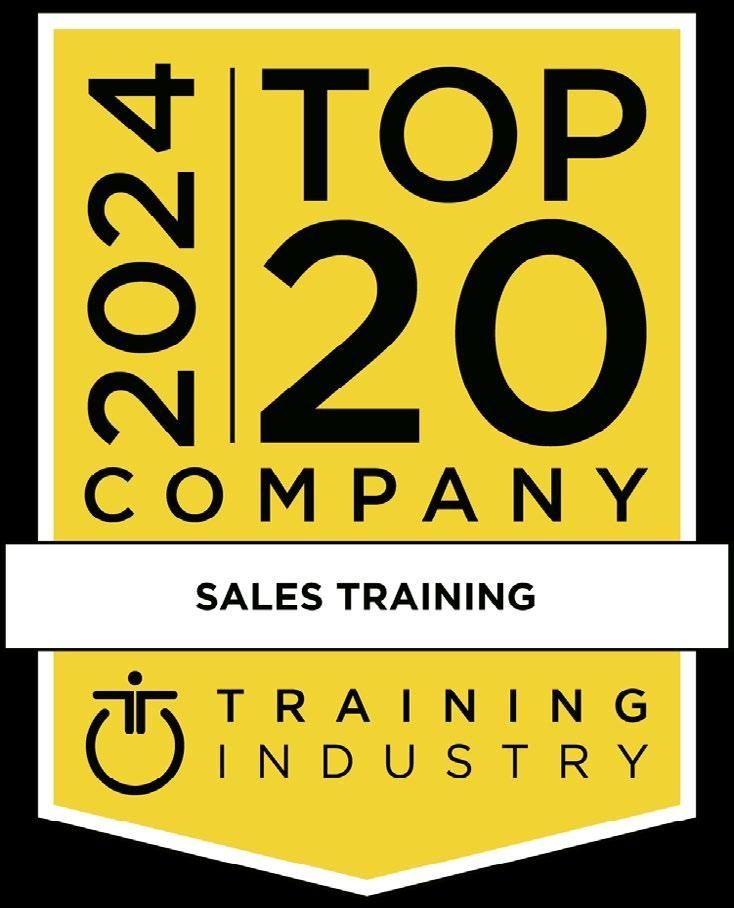
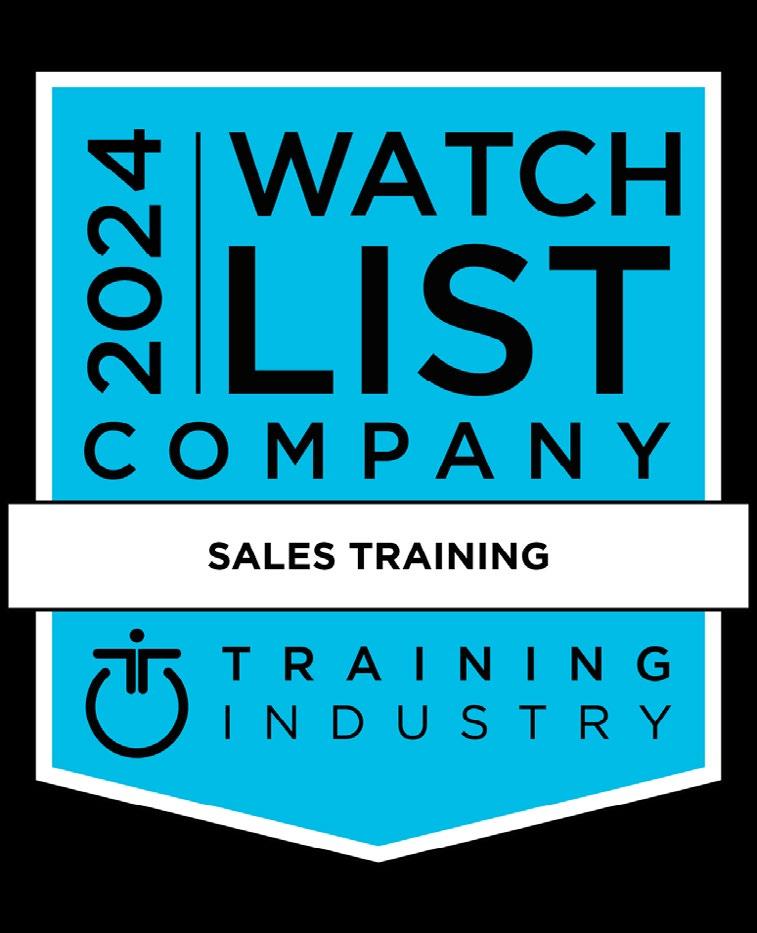
VIEW THE LISTS
trainingindustry.com/top-training-companies
The Top 20 Companies are a service provided by Training Industry, Inc. Because of the diversity of services offered, no attempt is made to rank Top 20 lists.